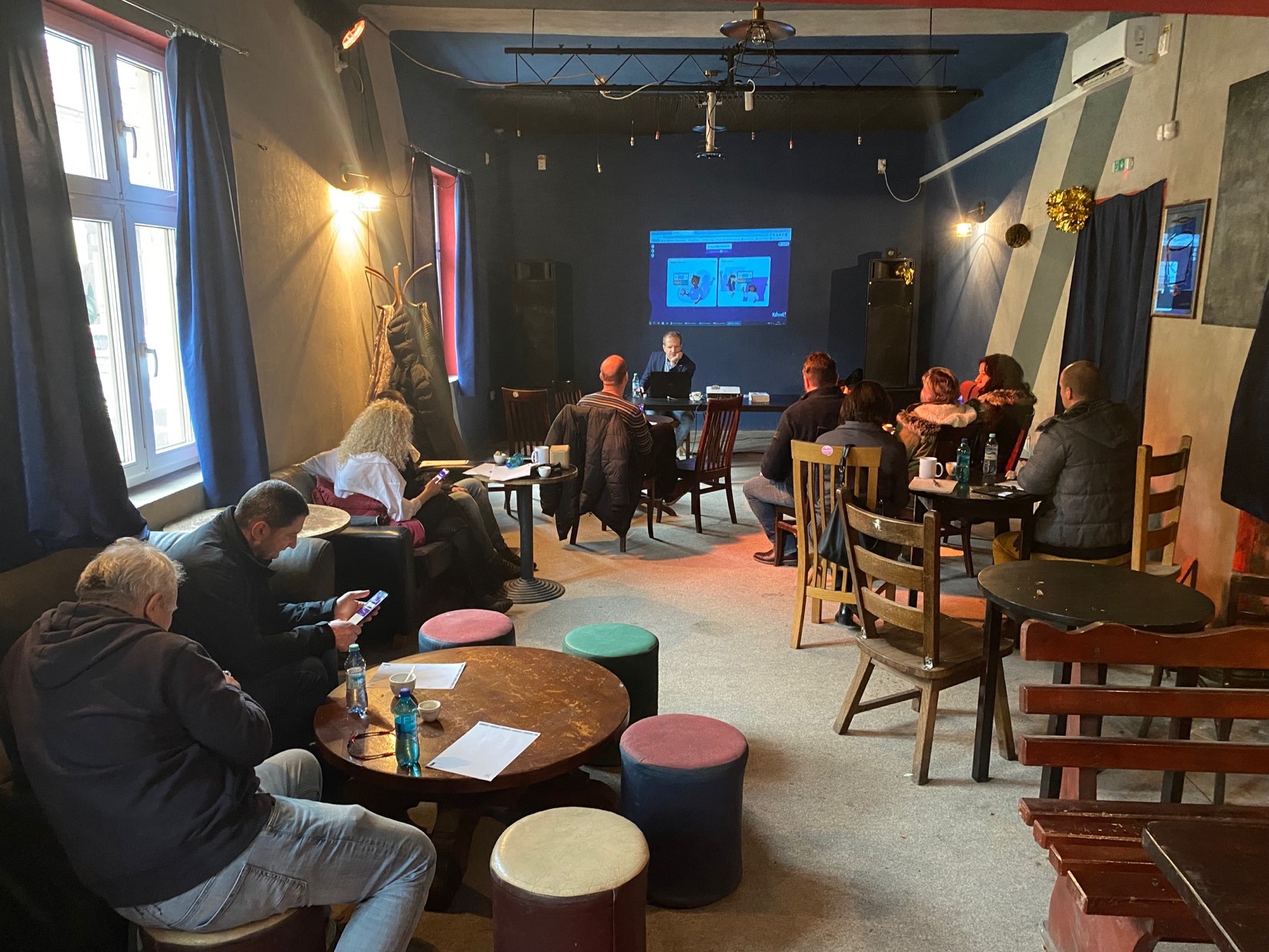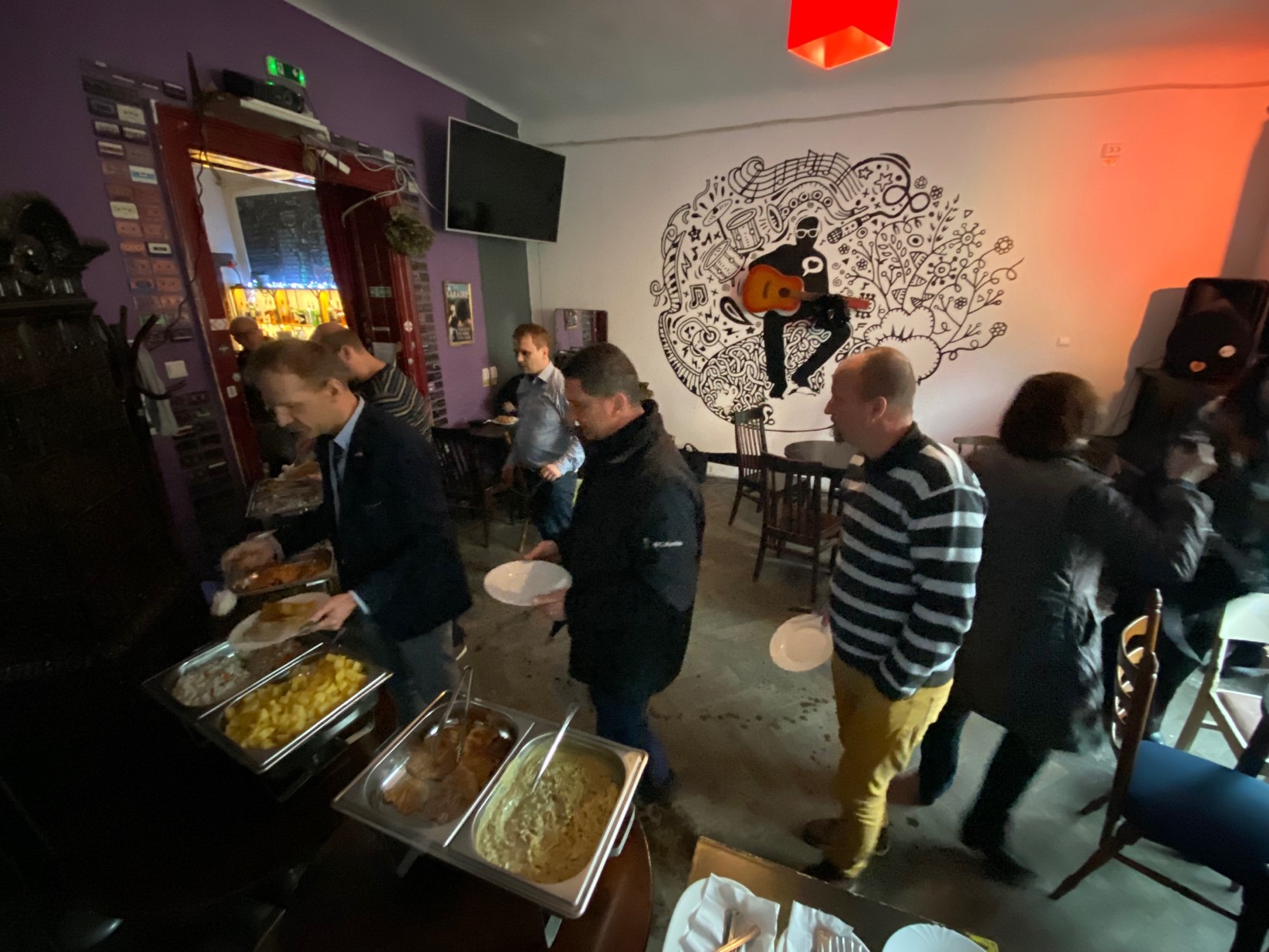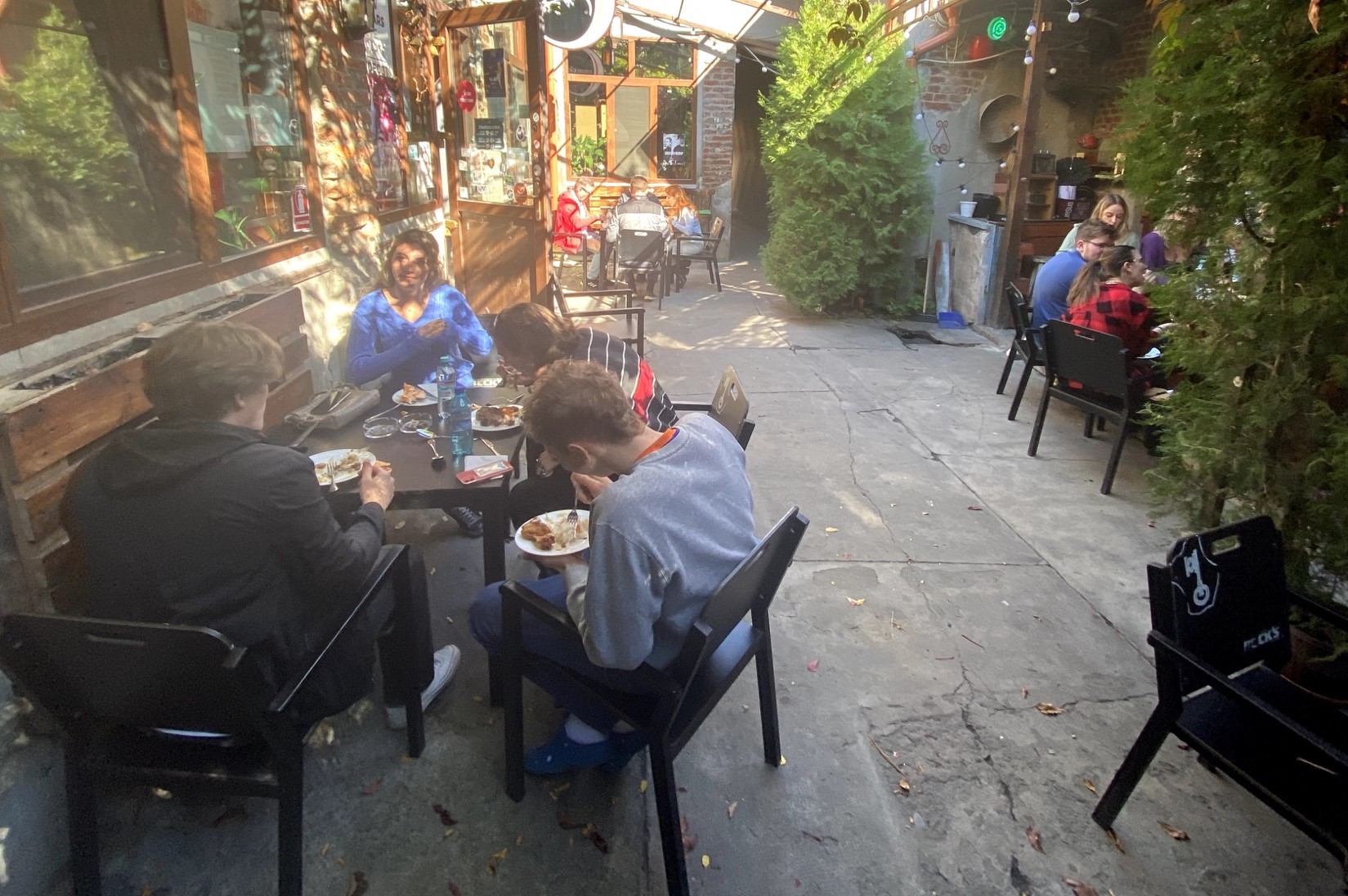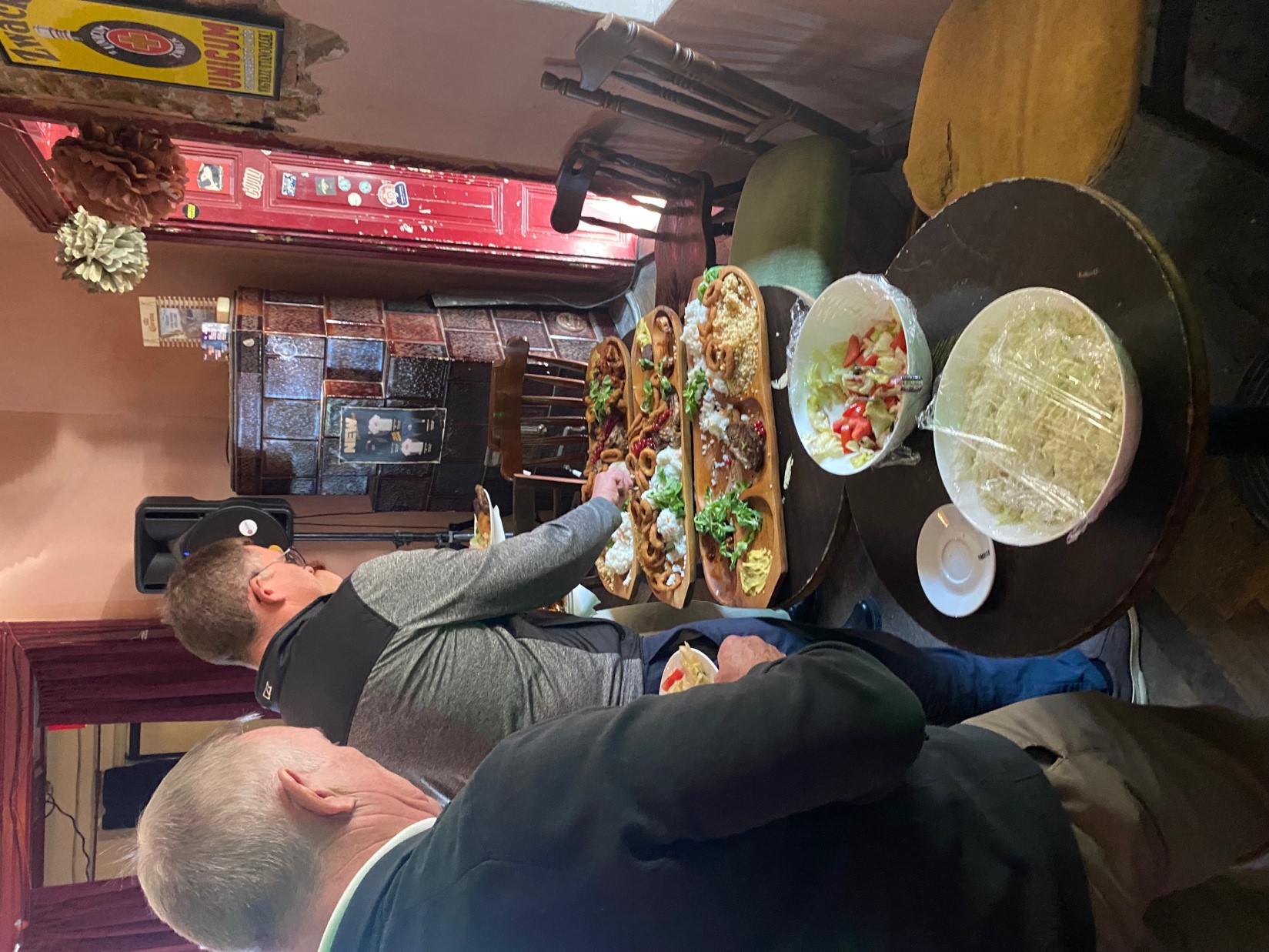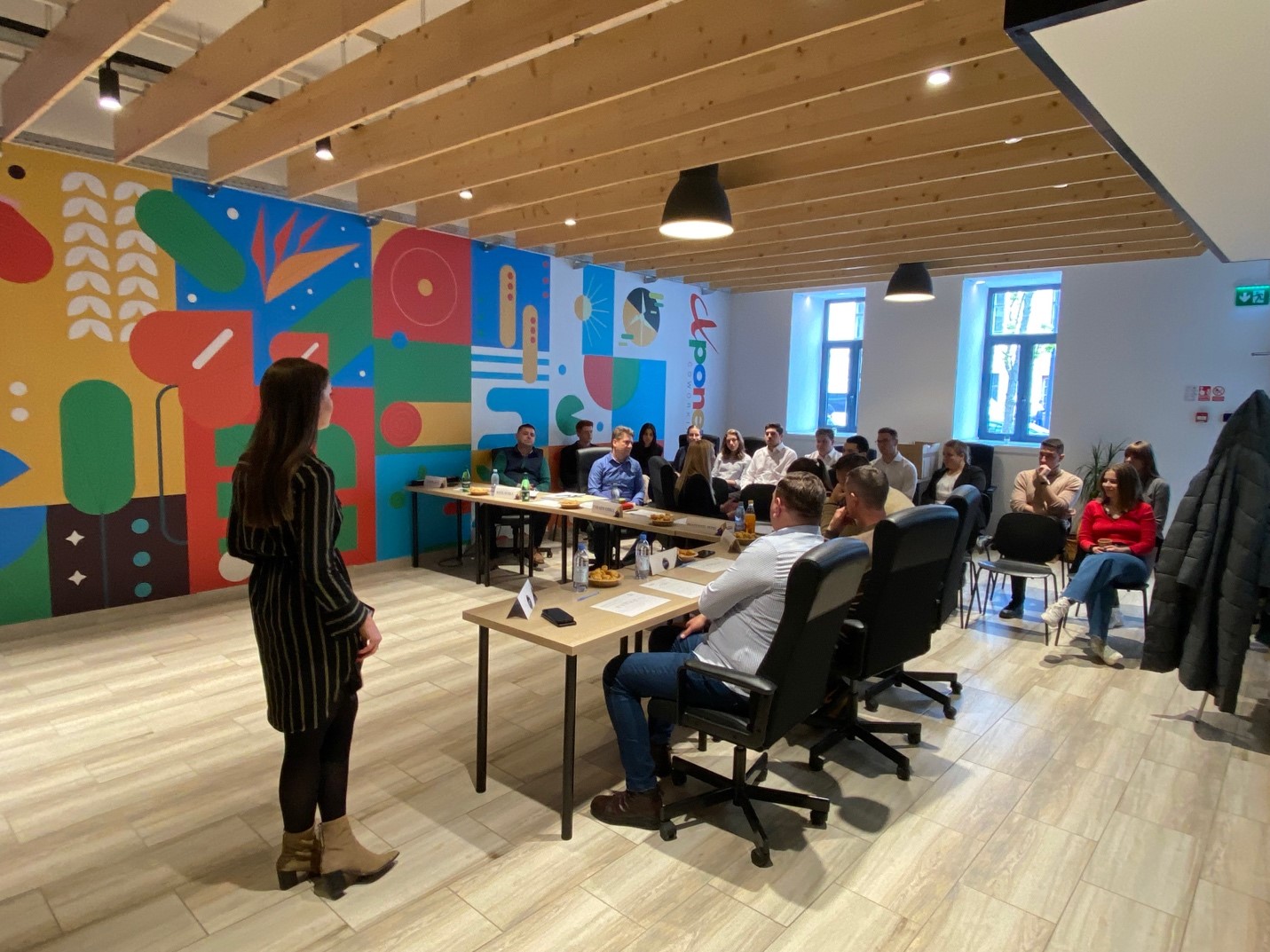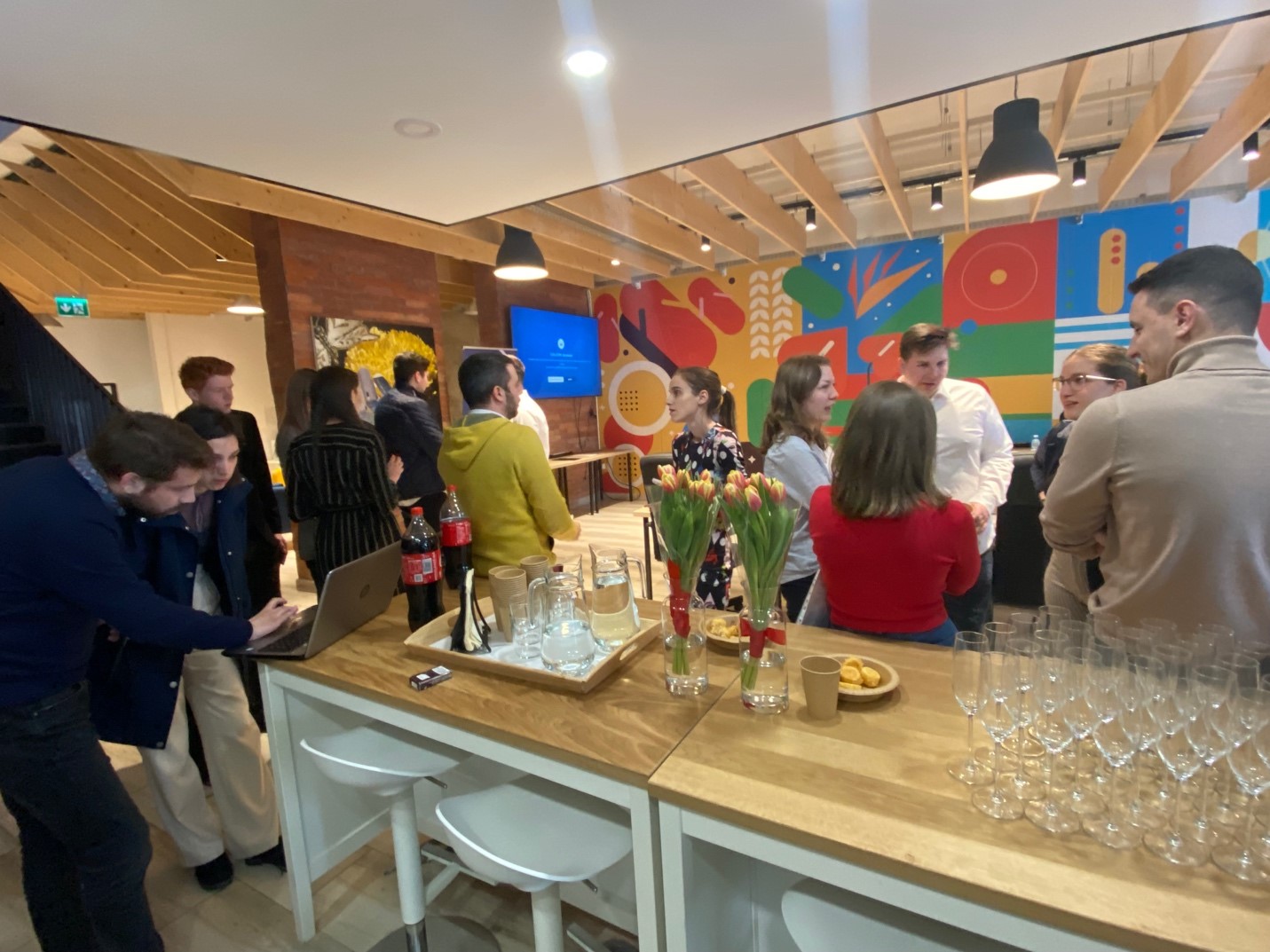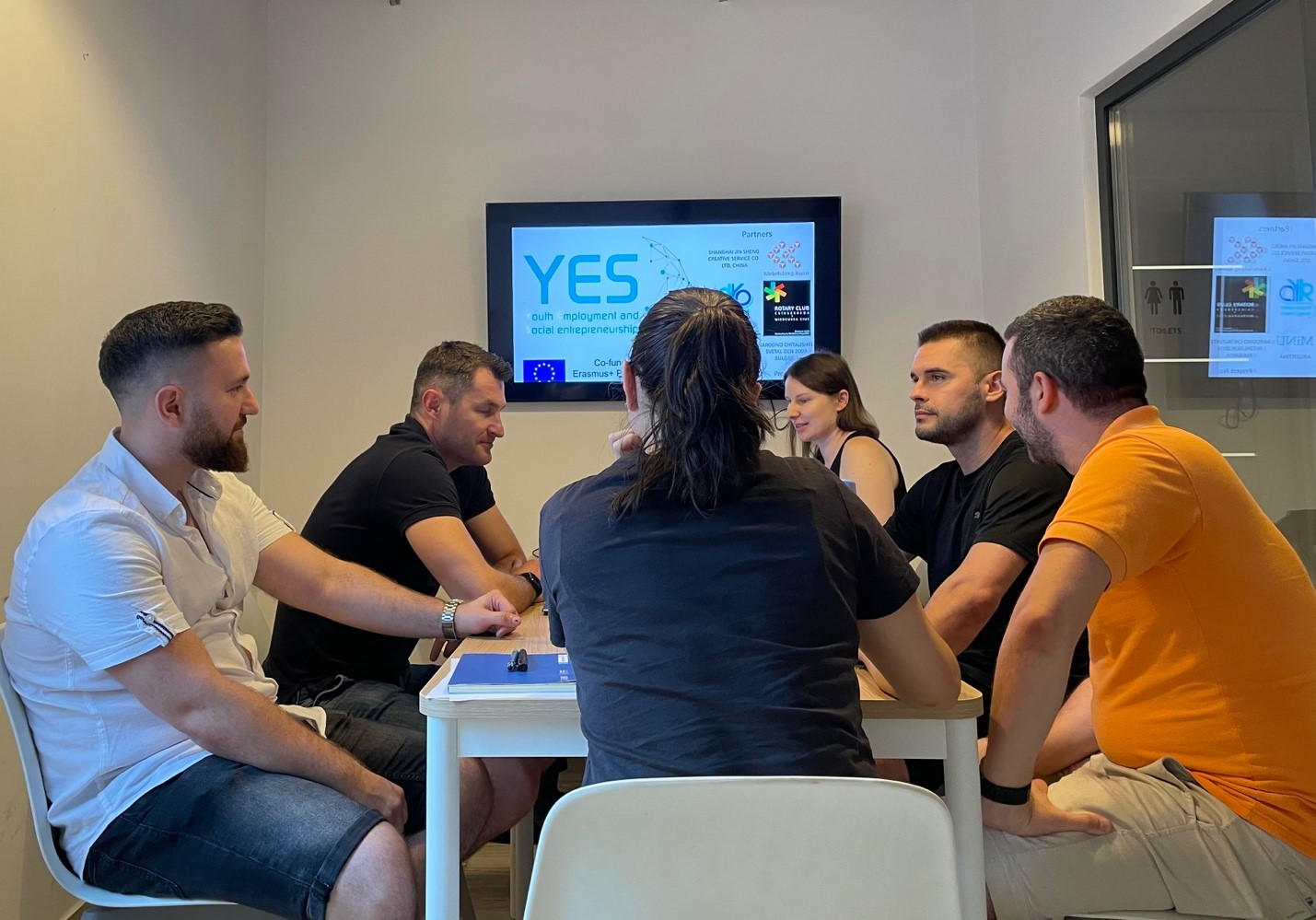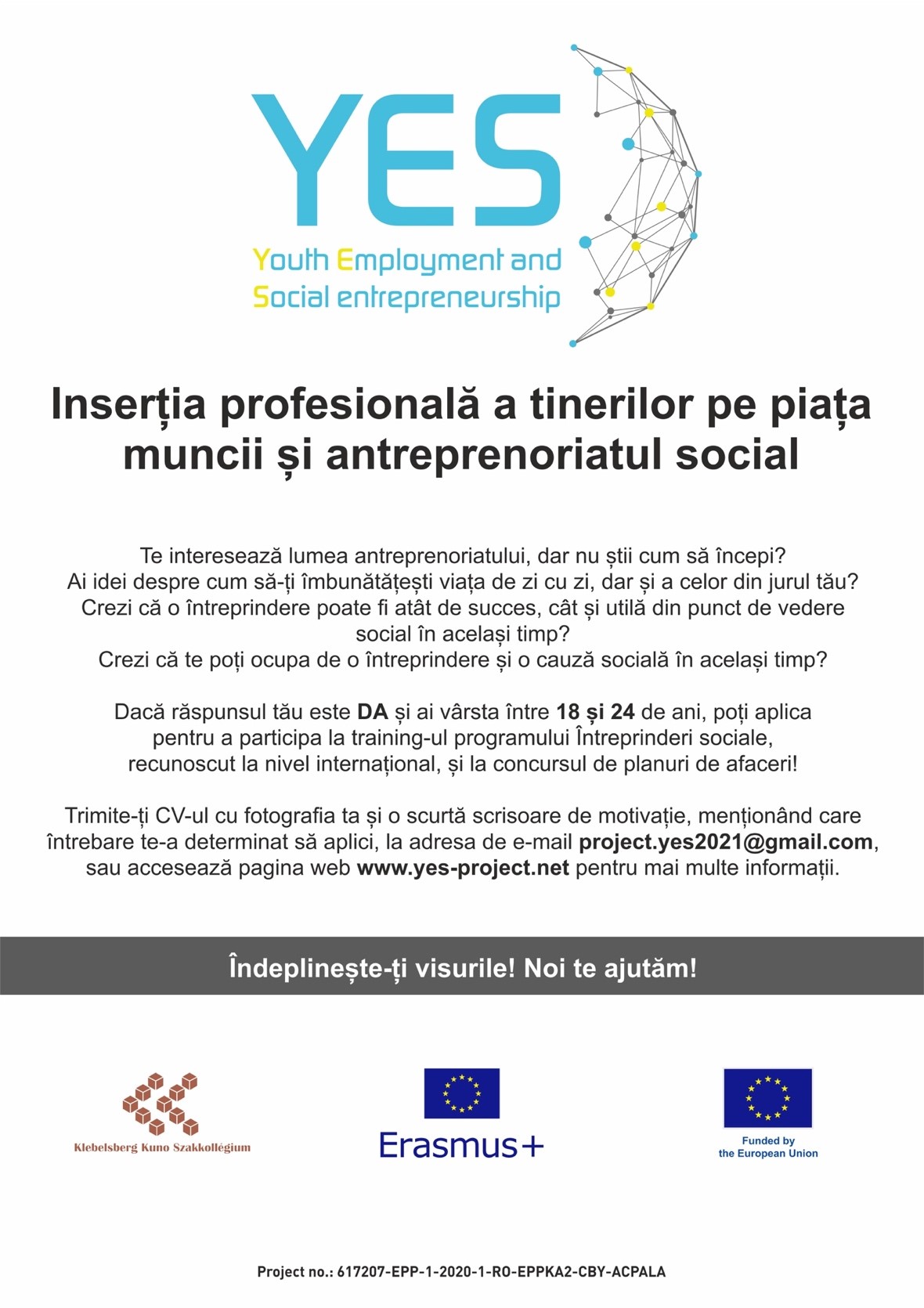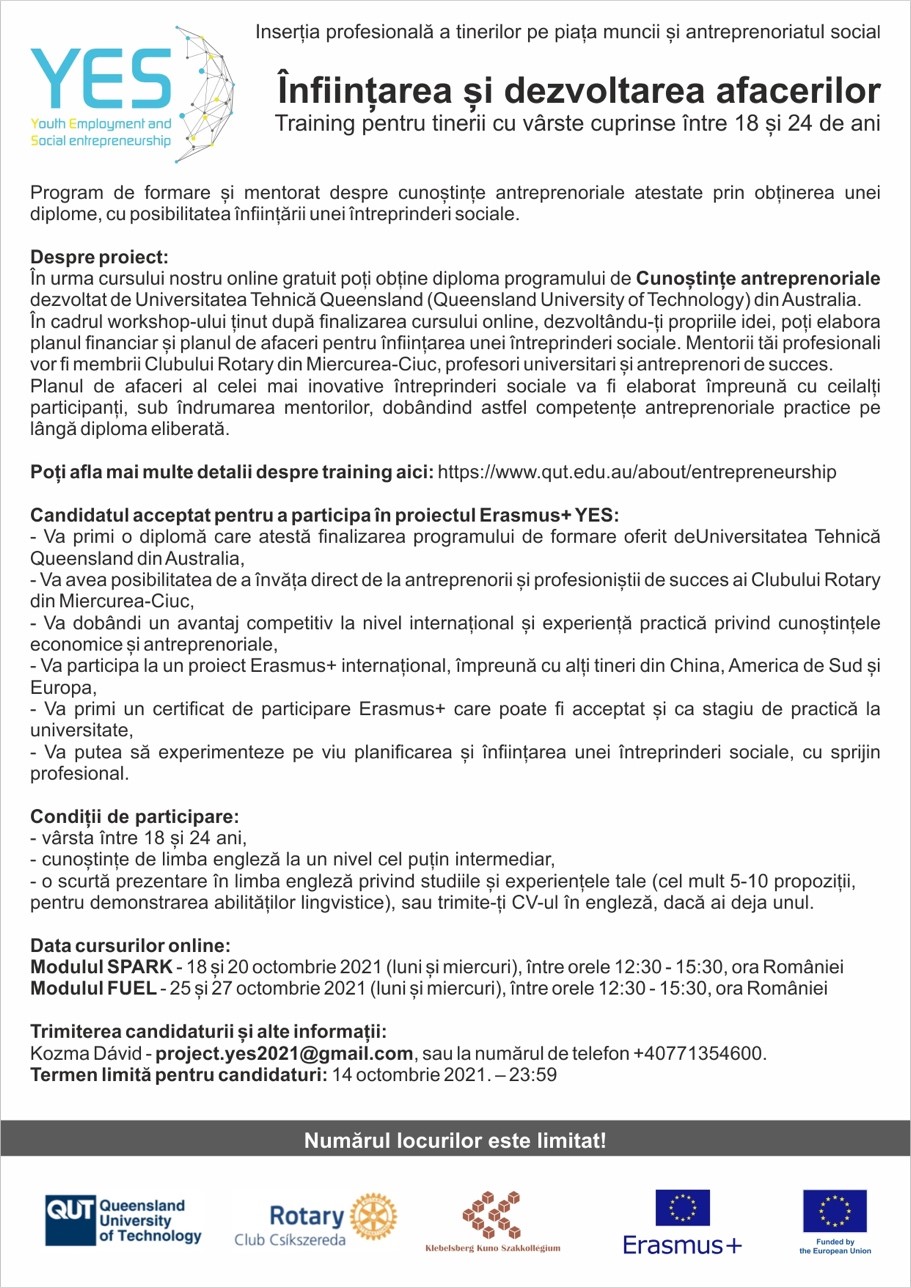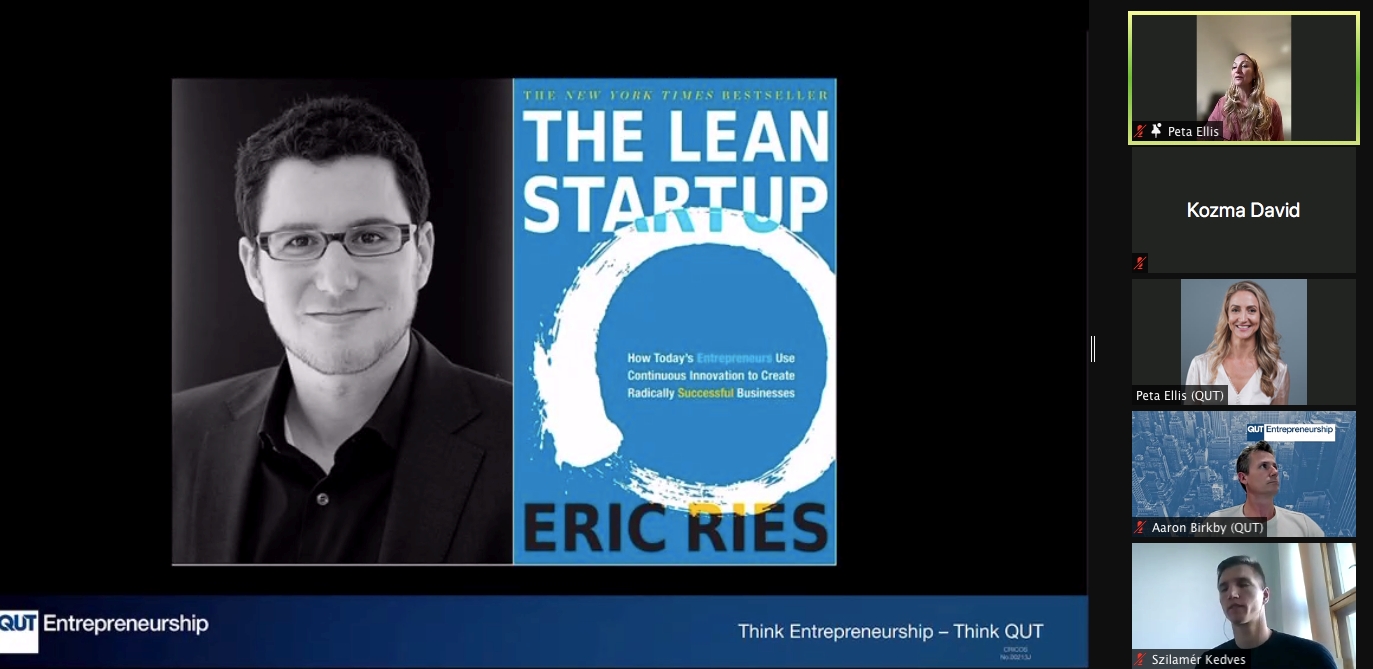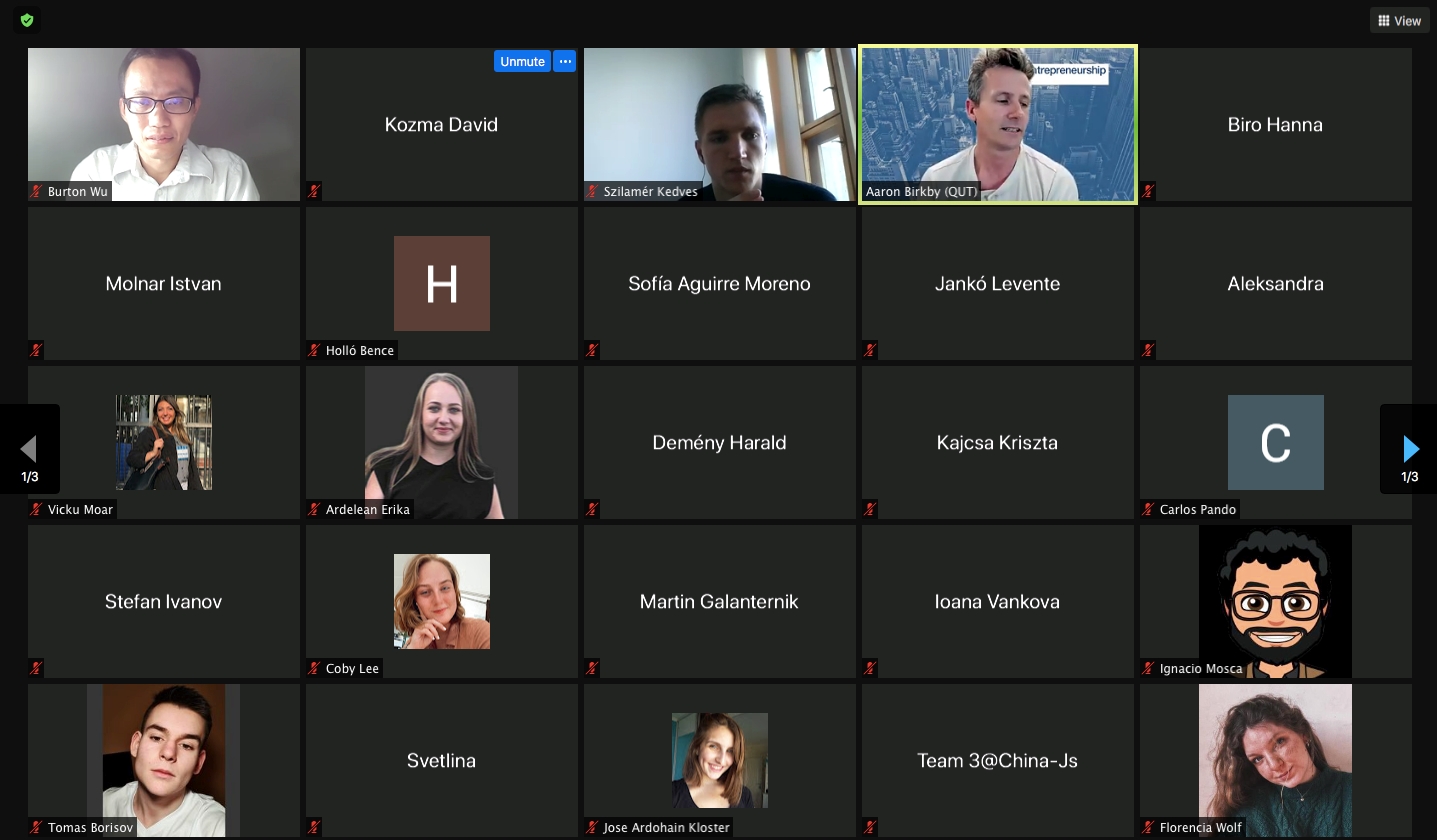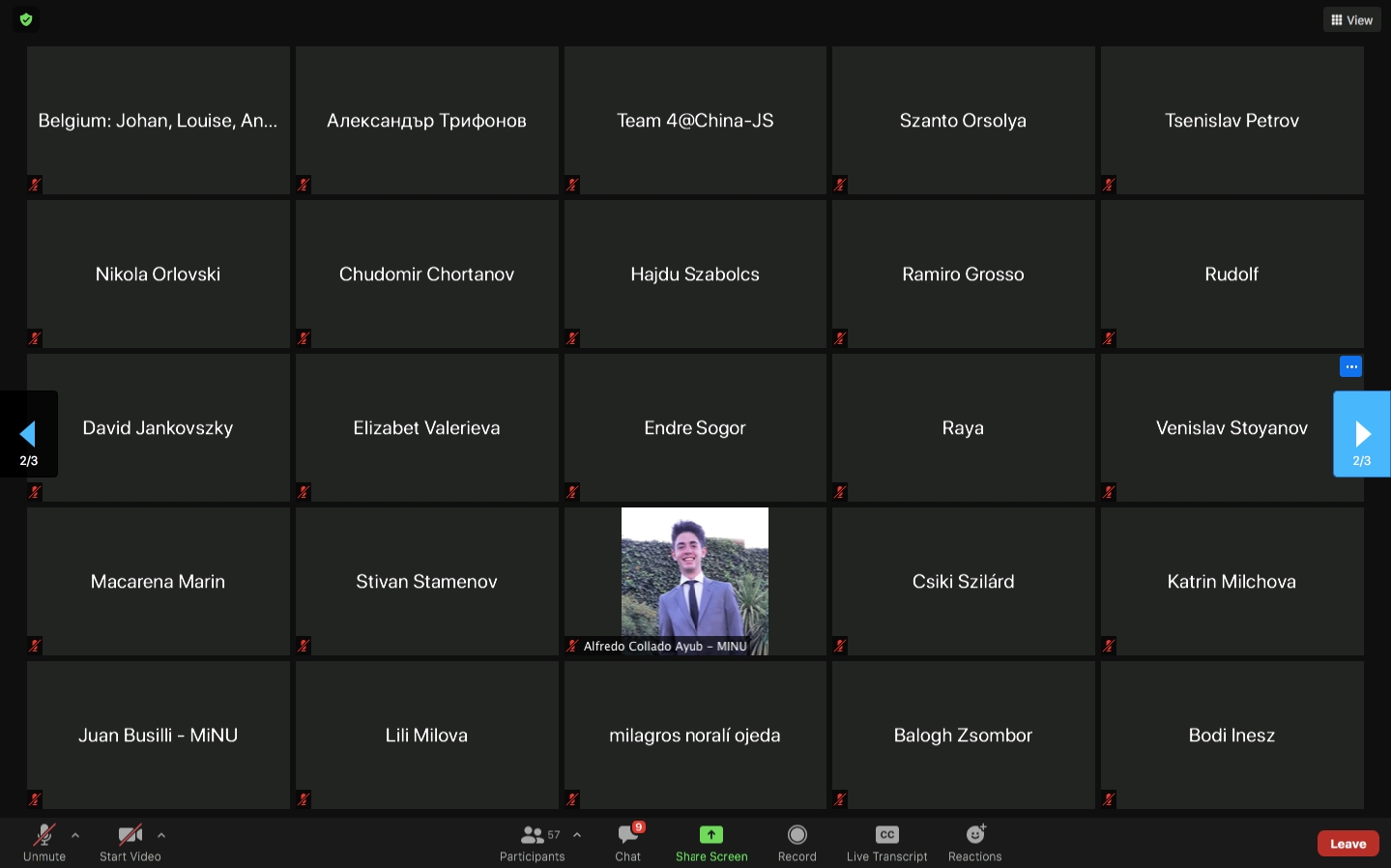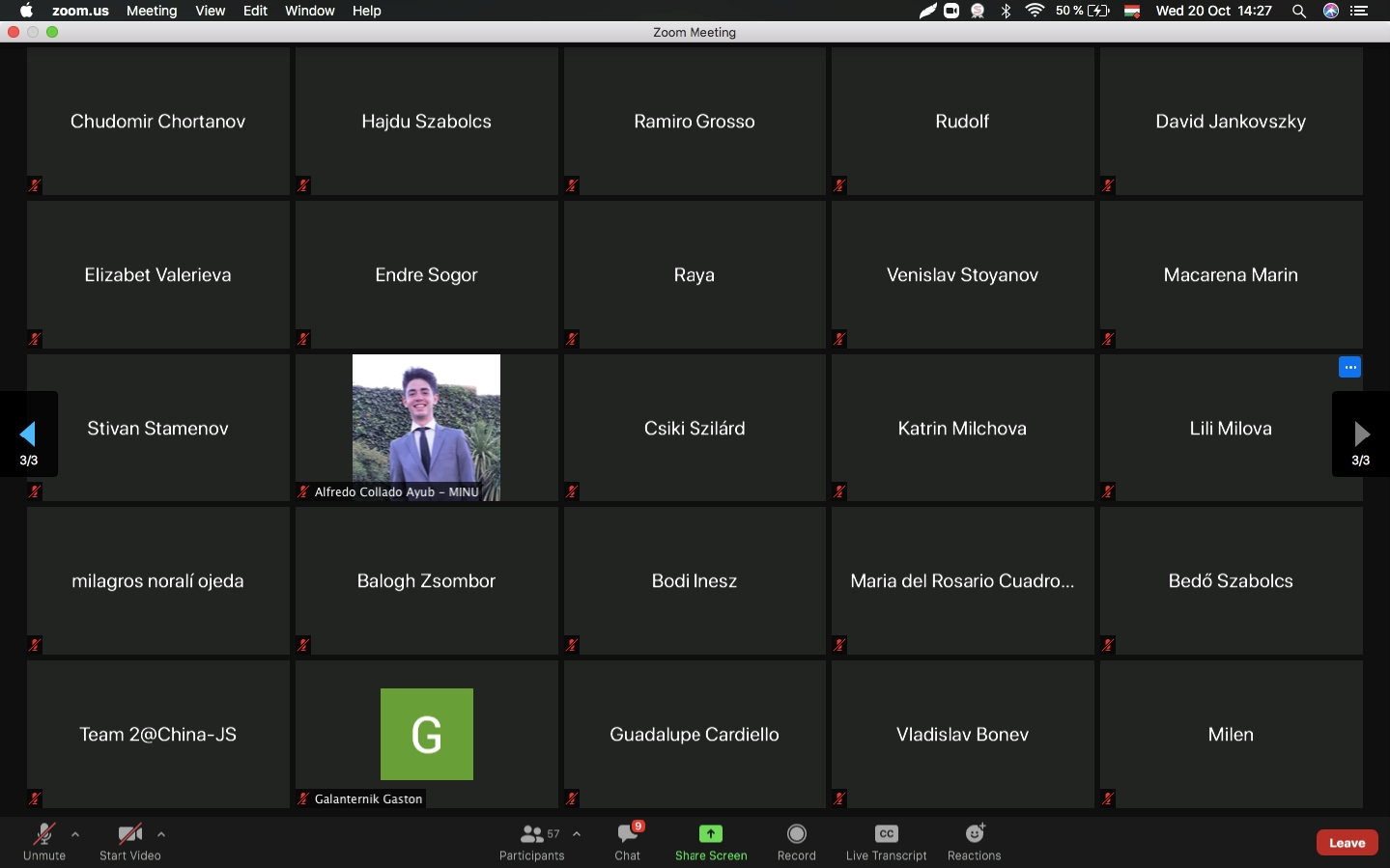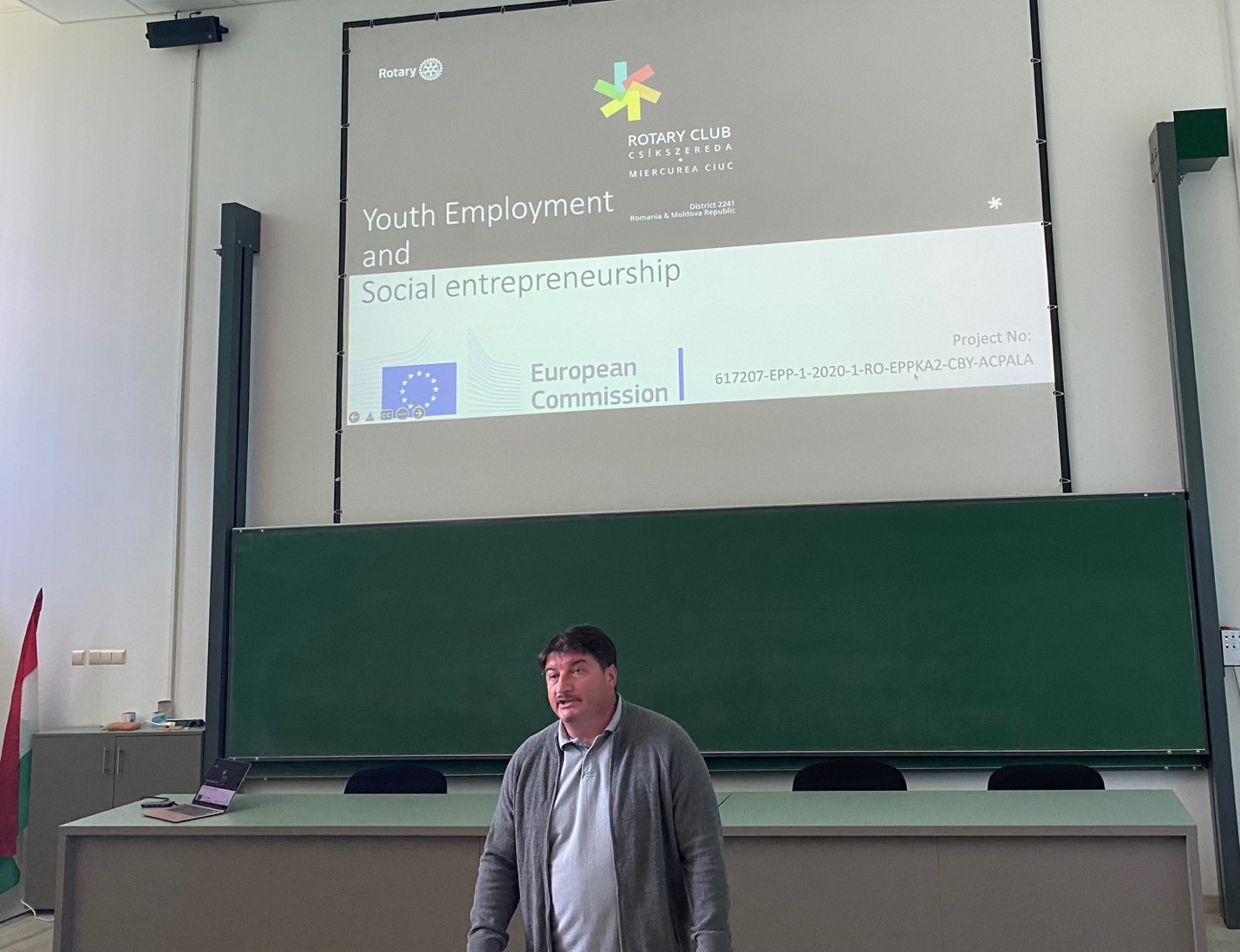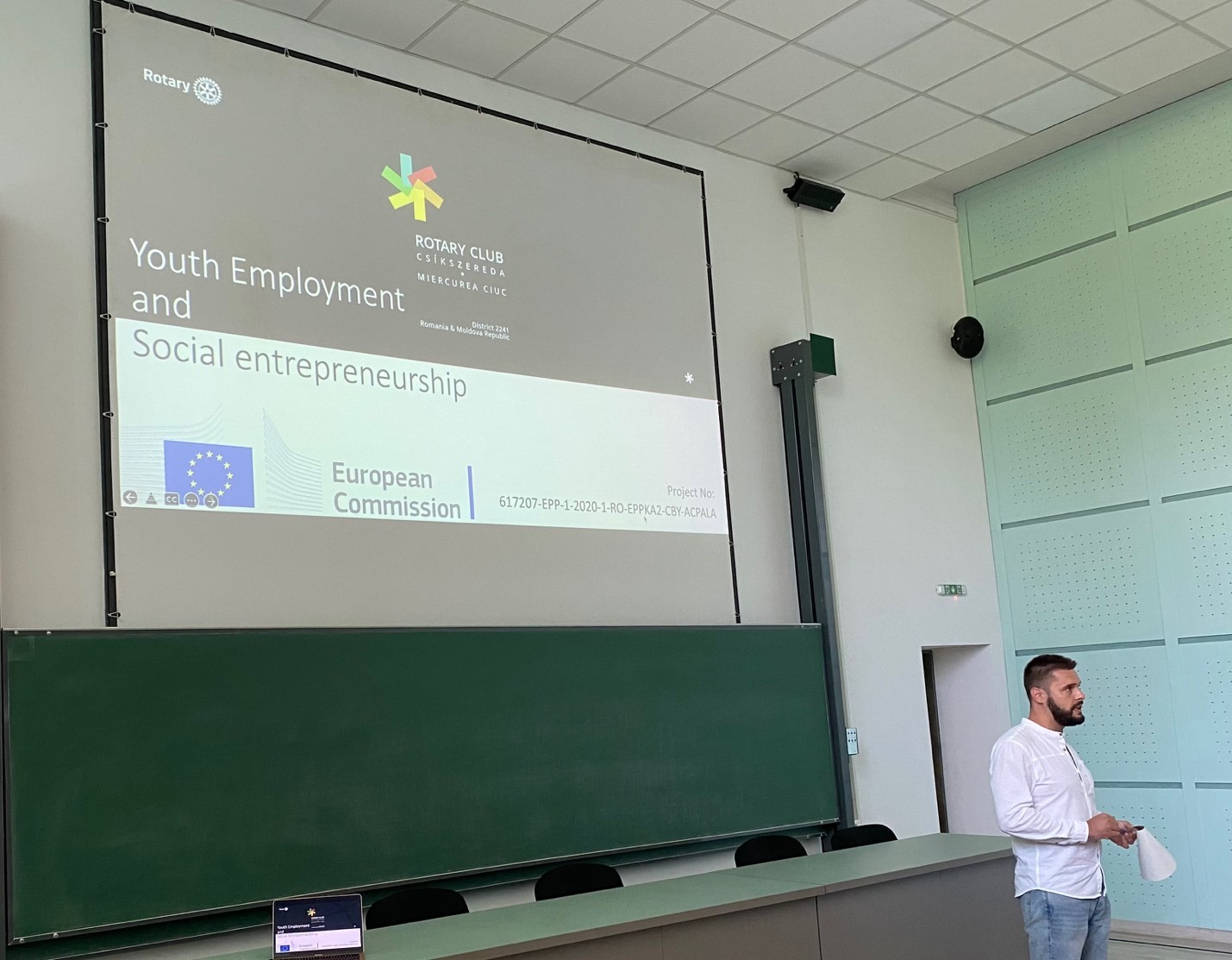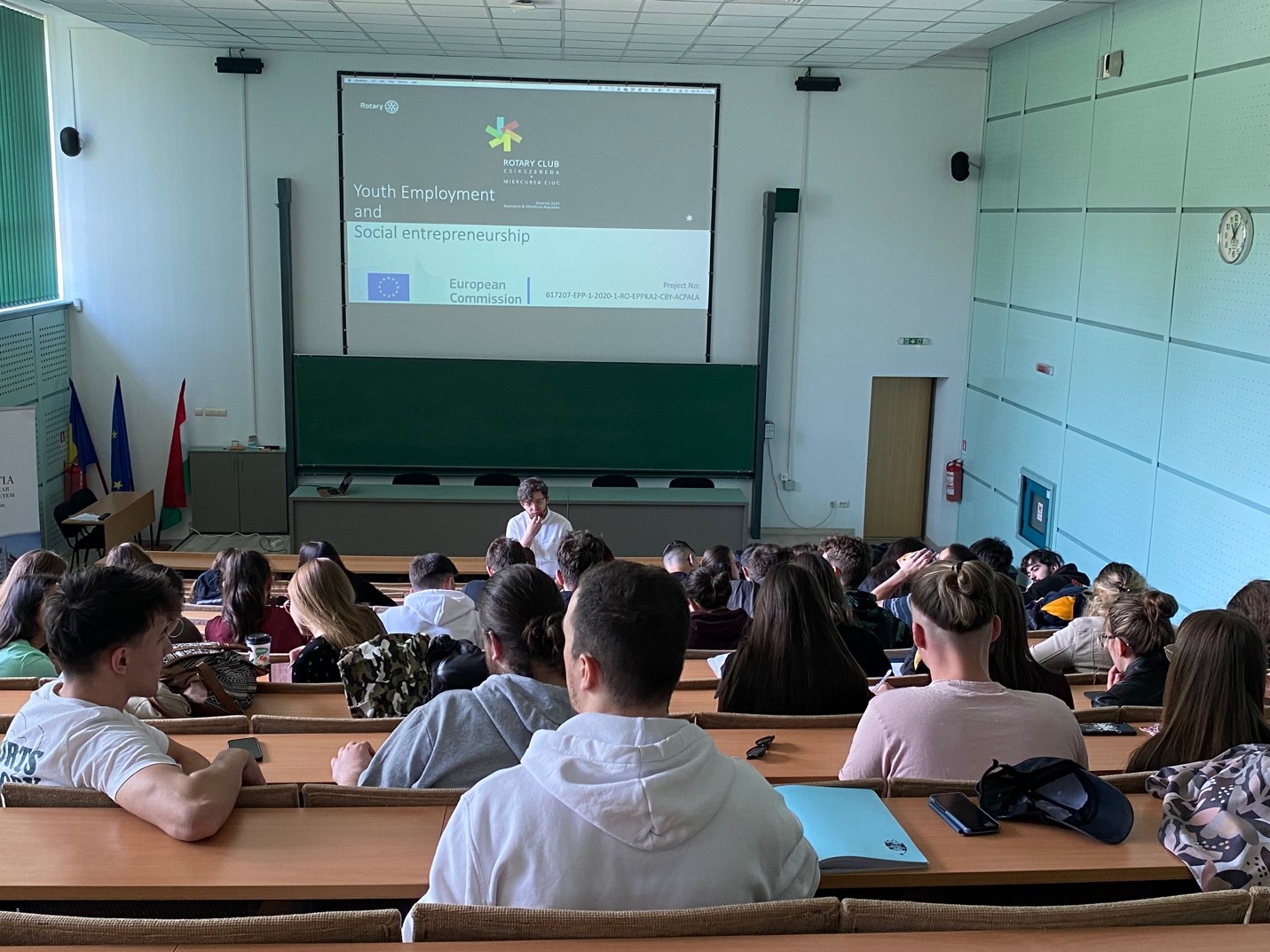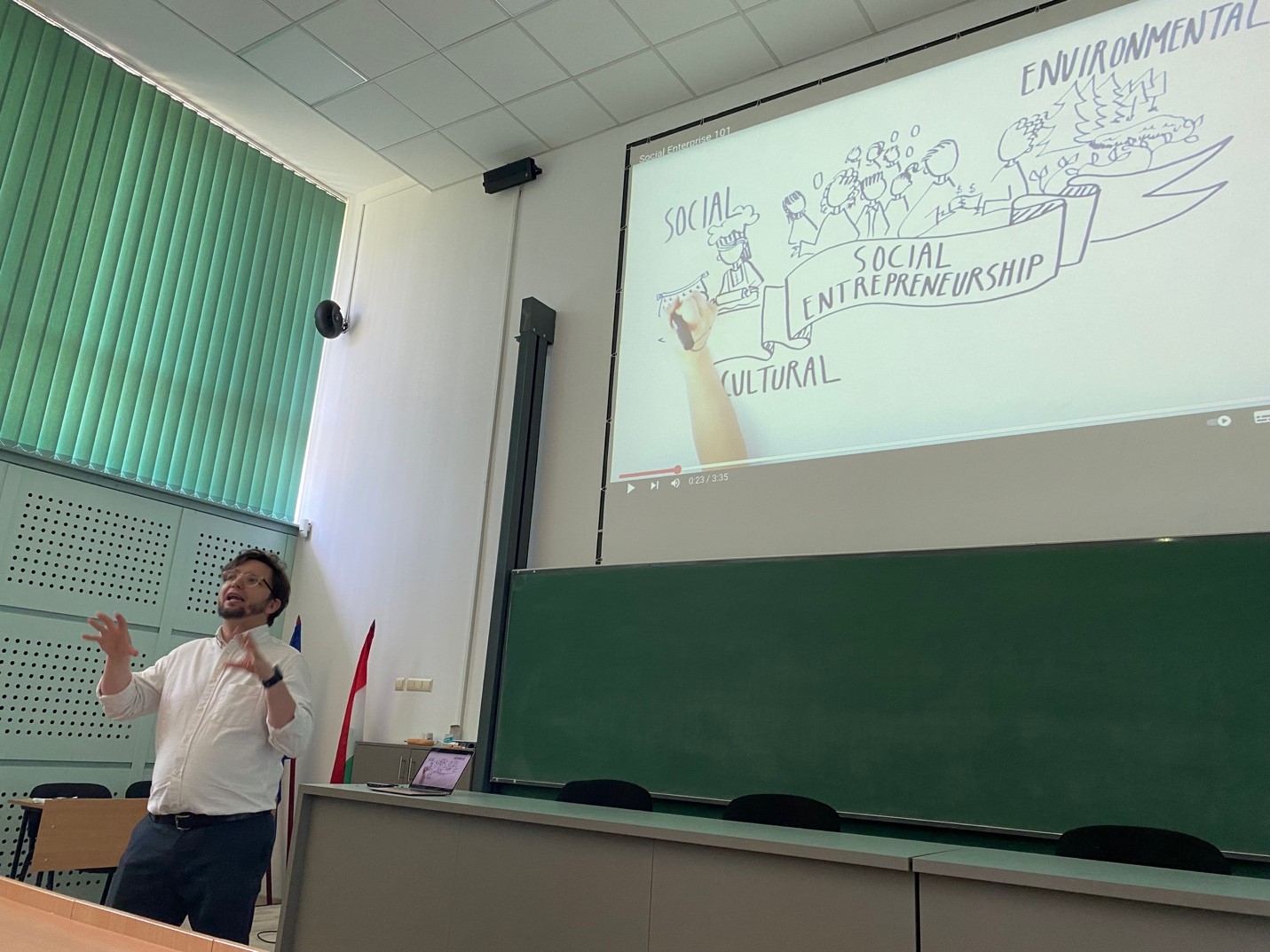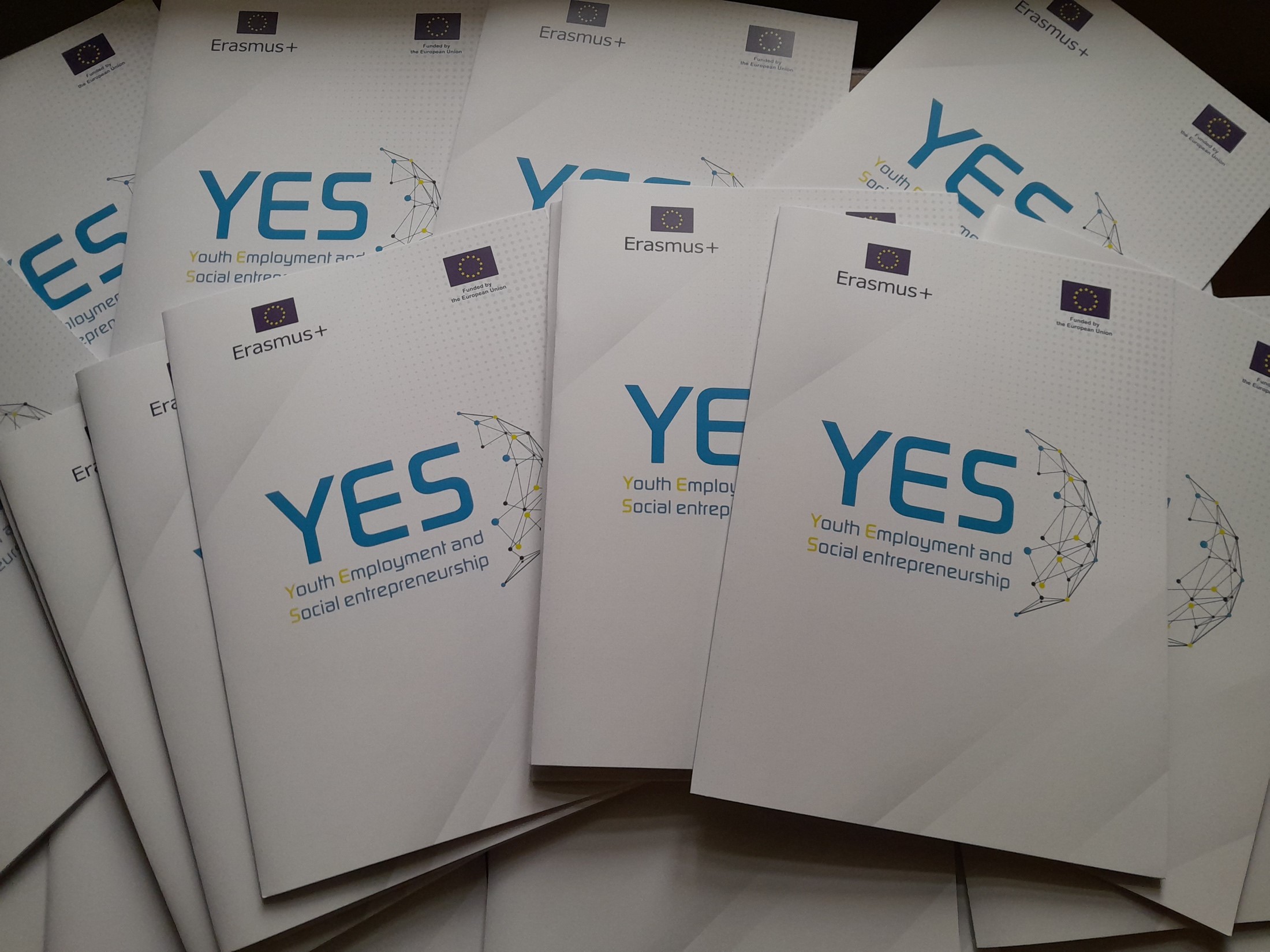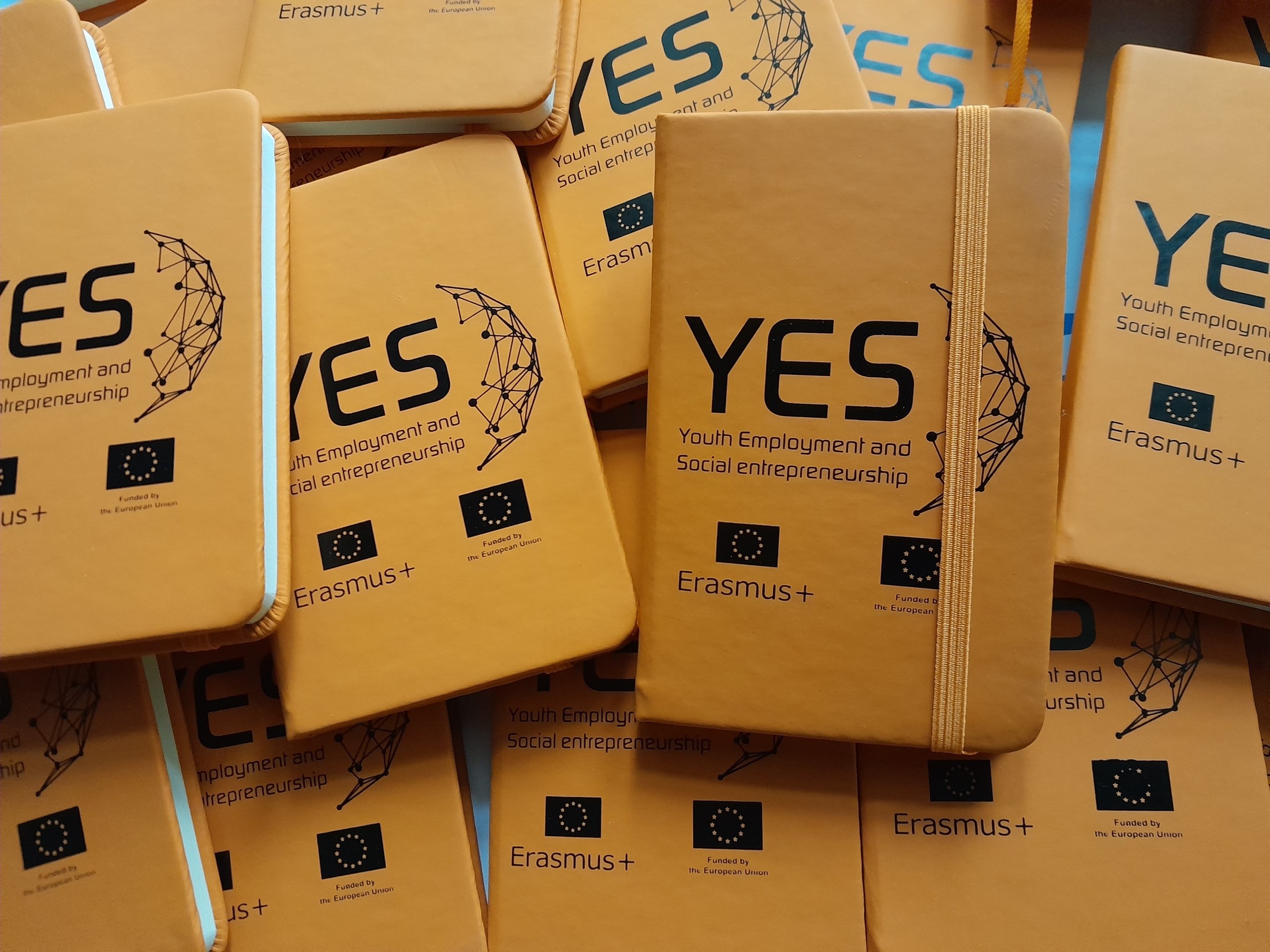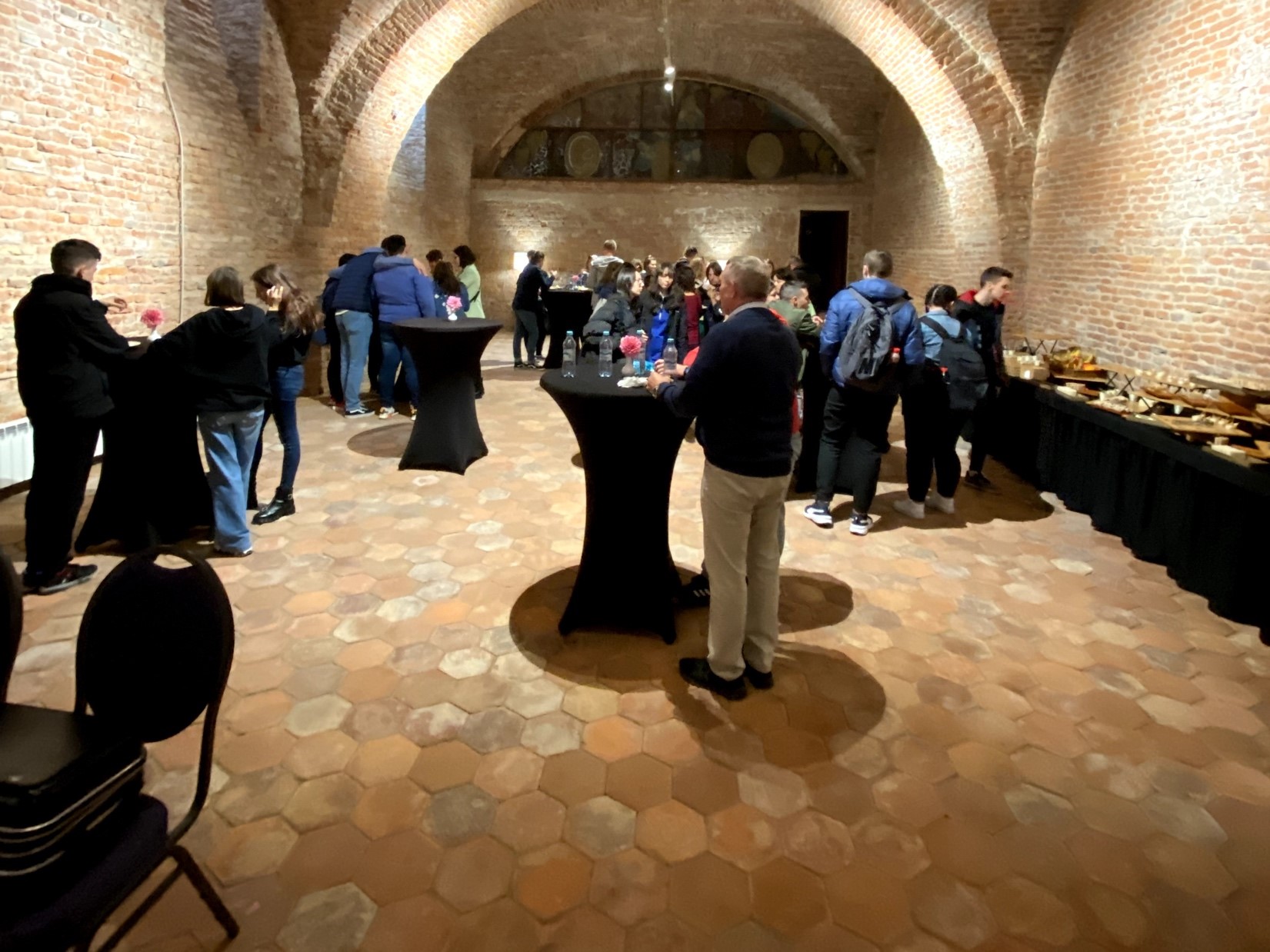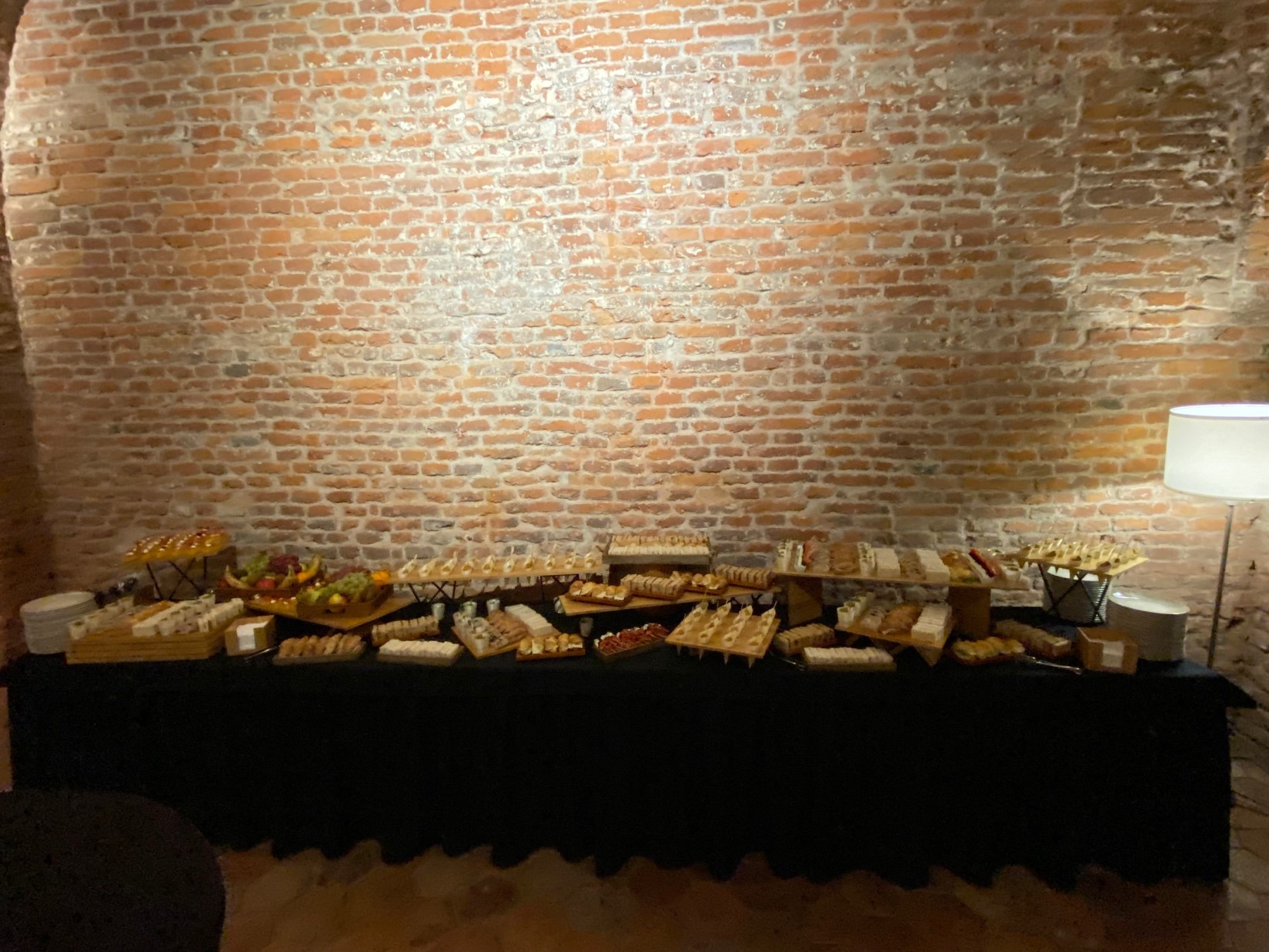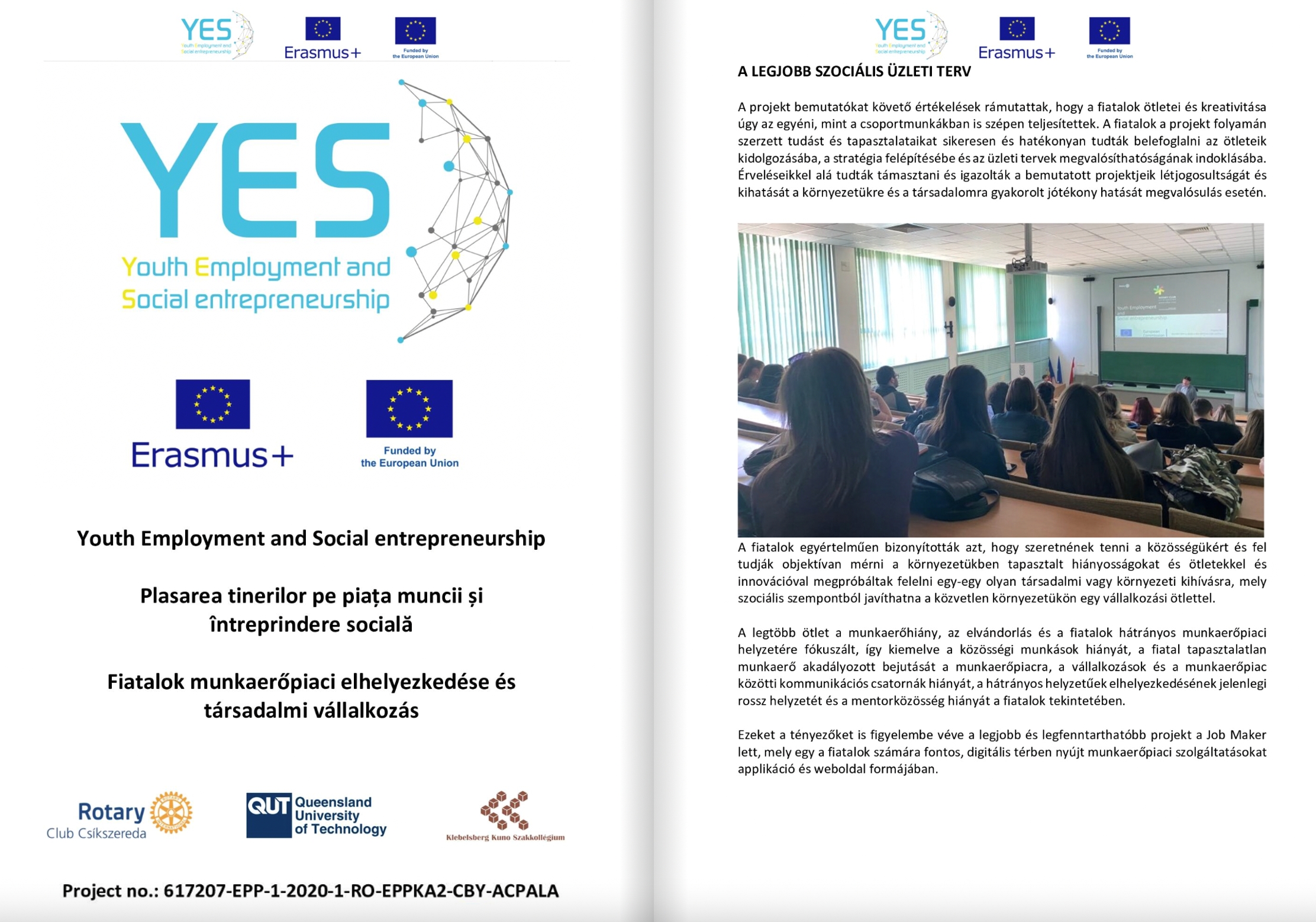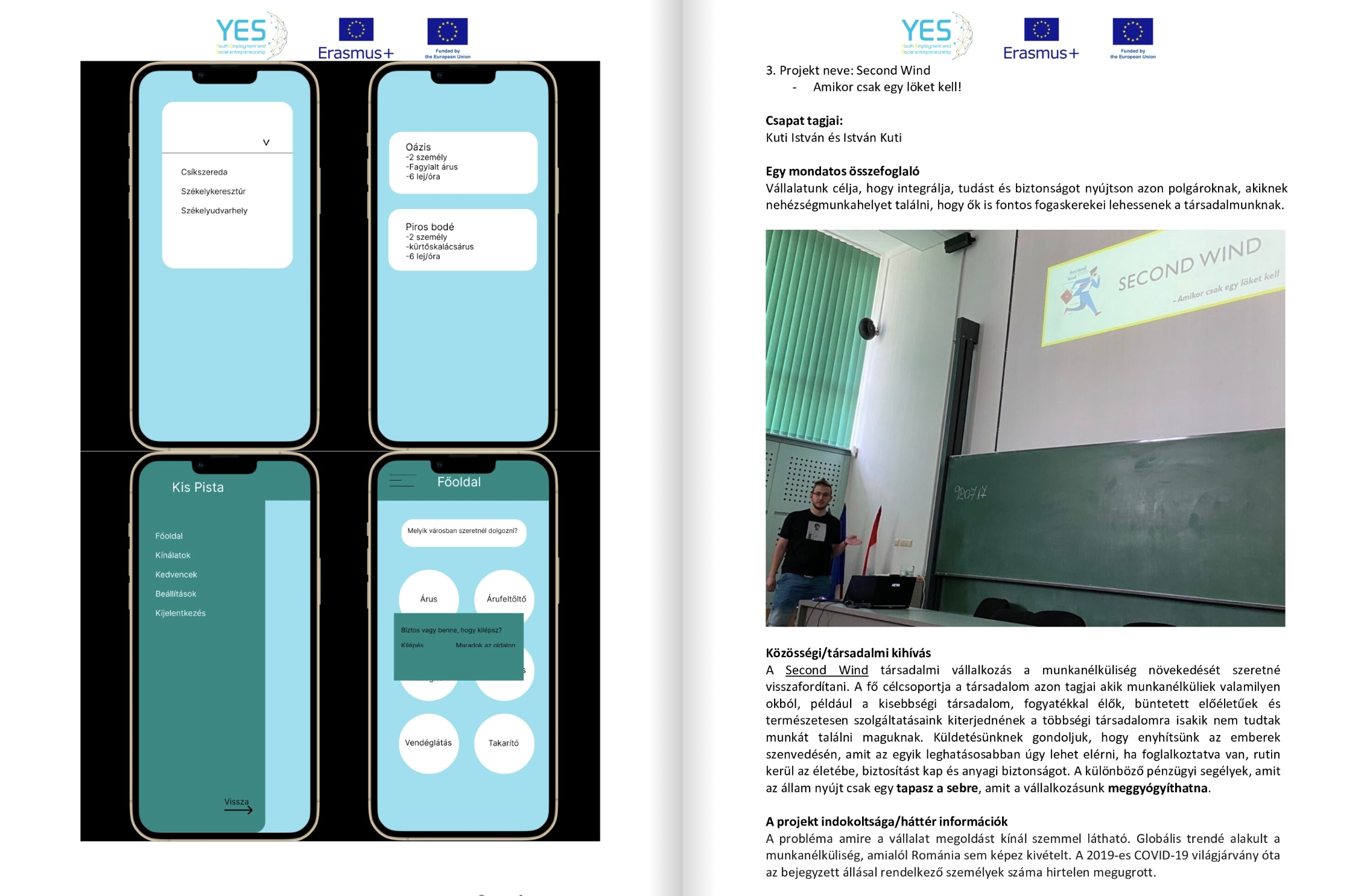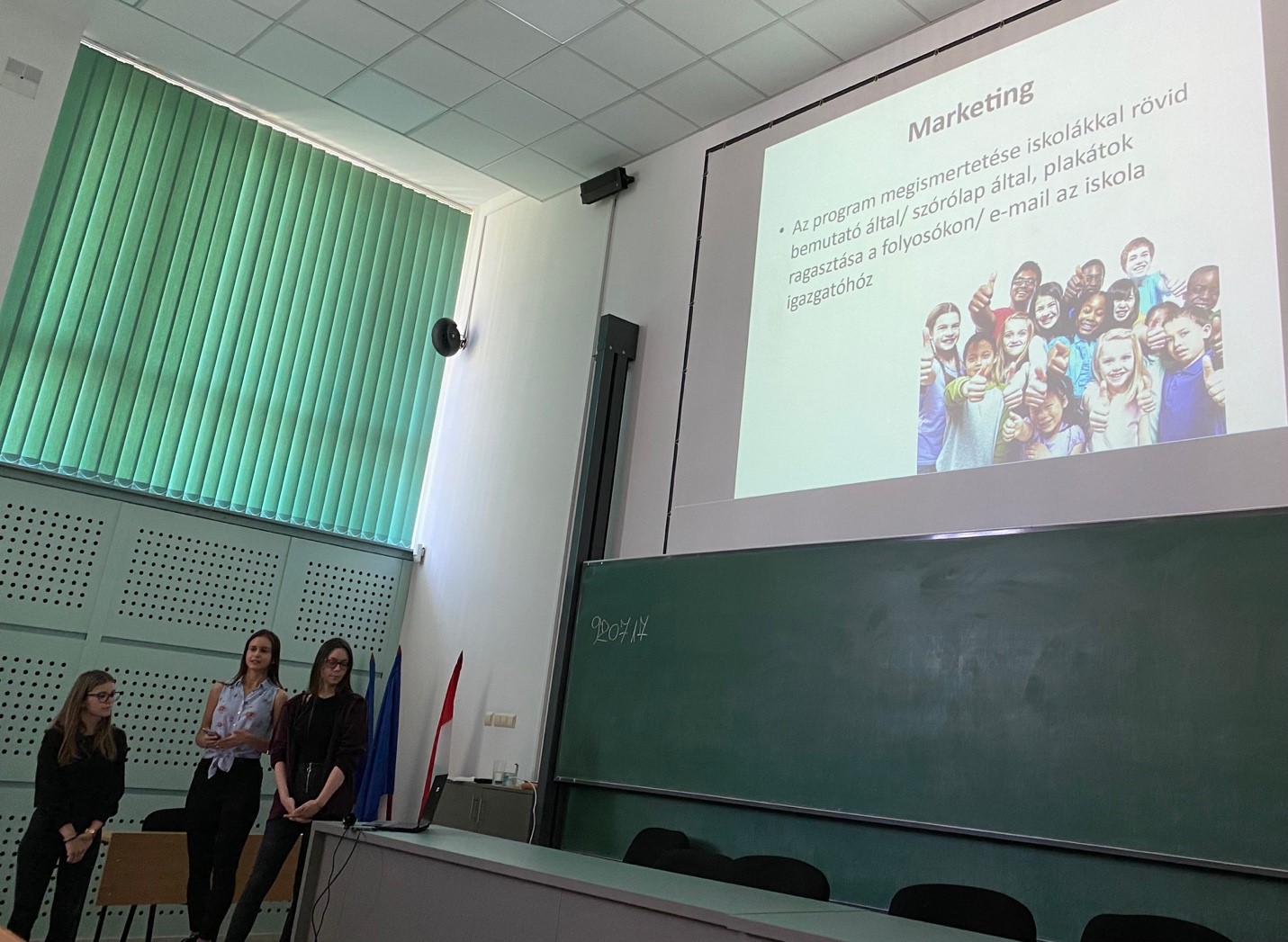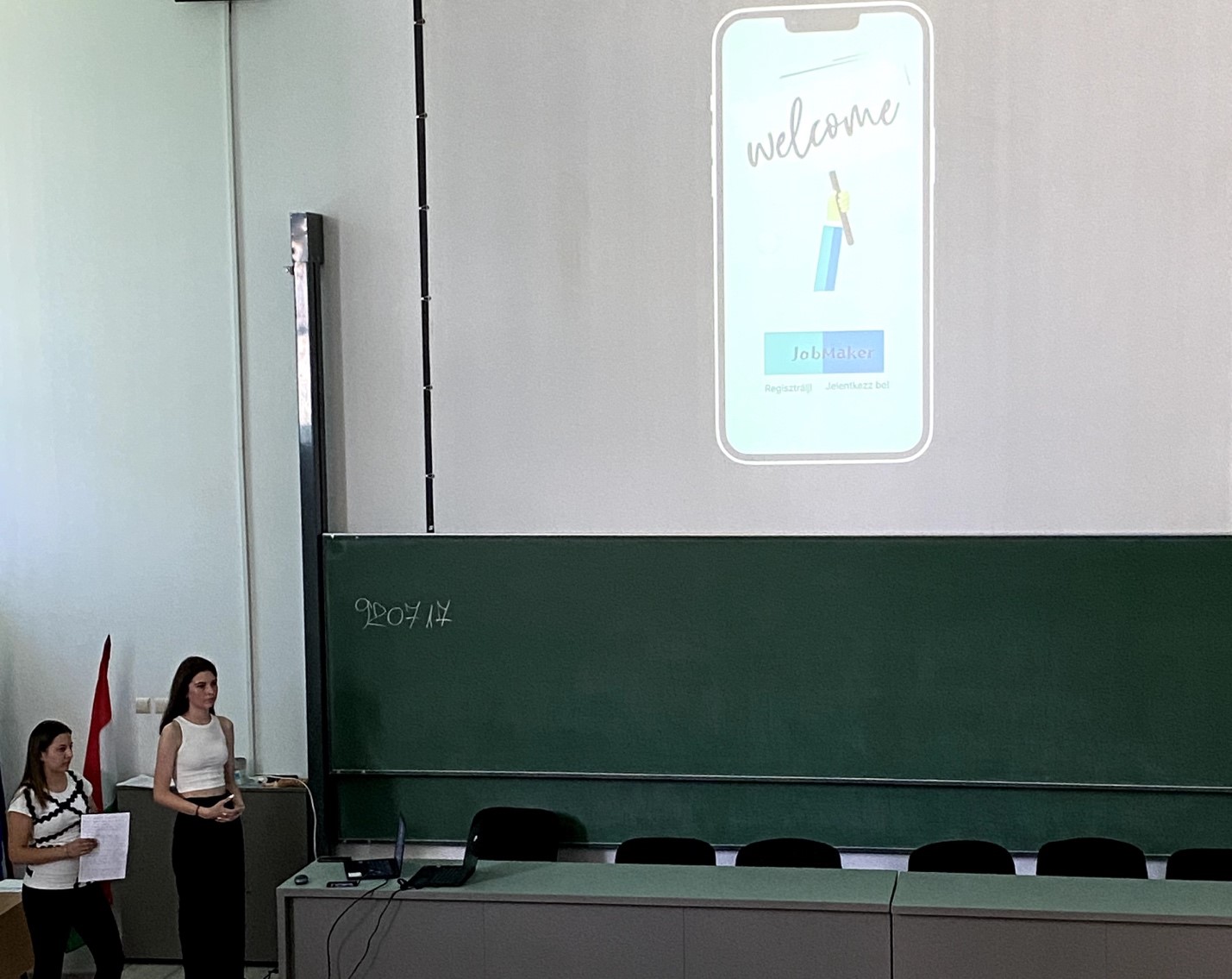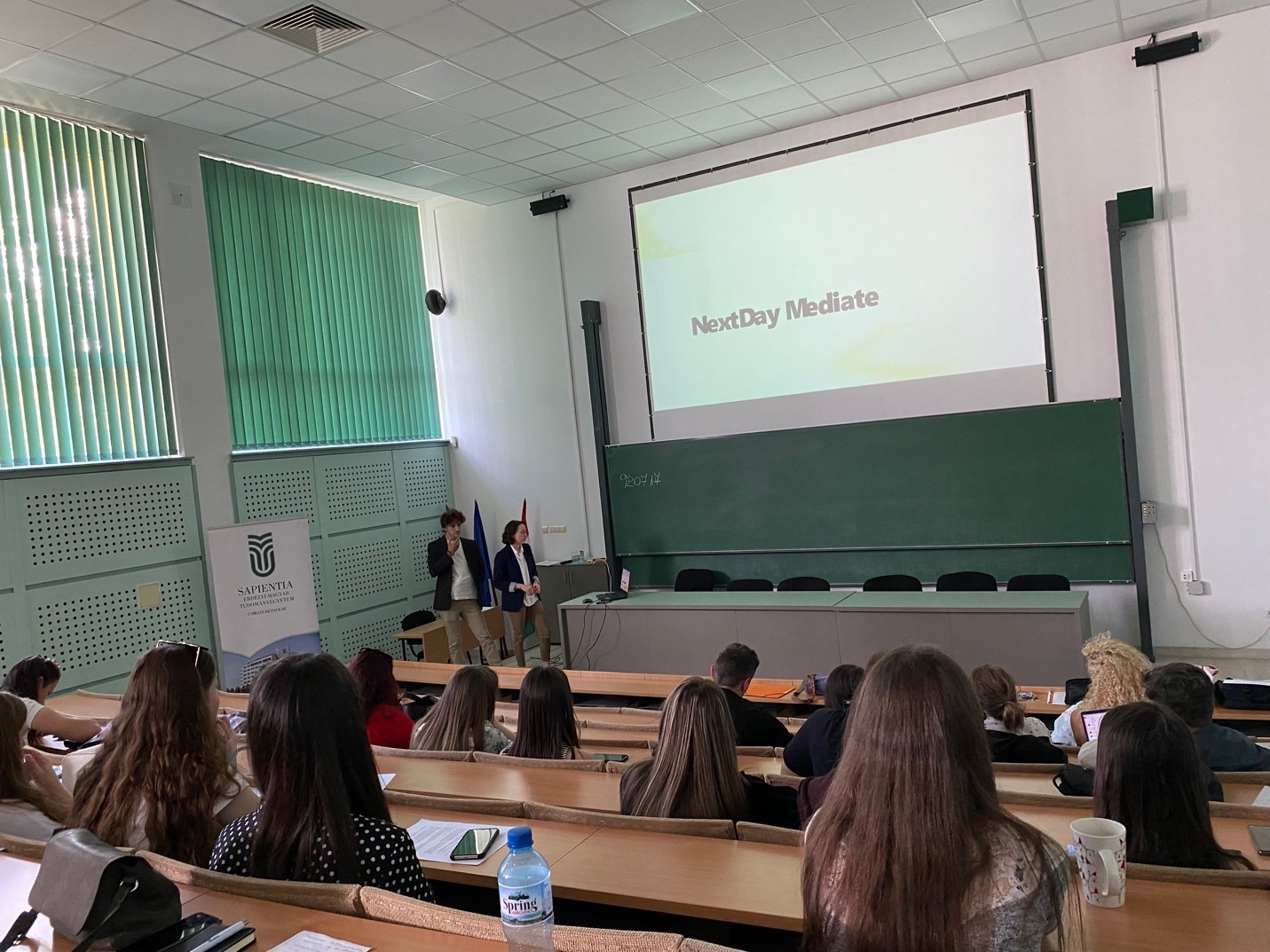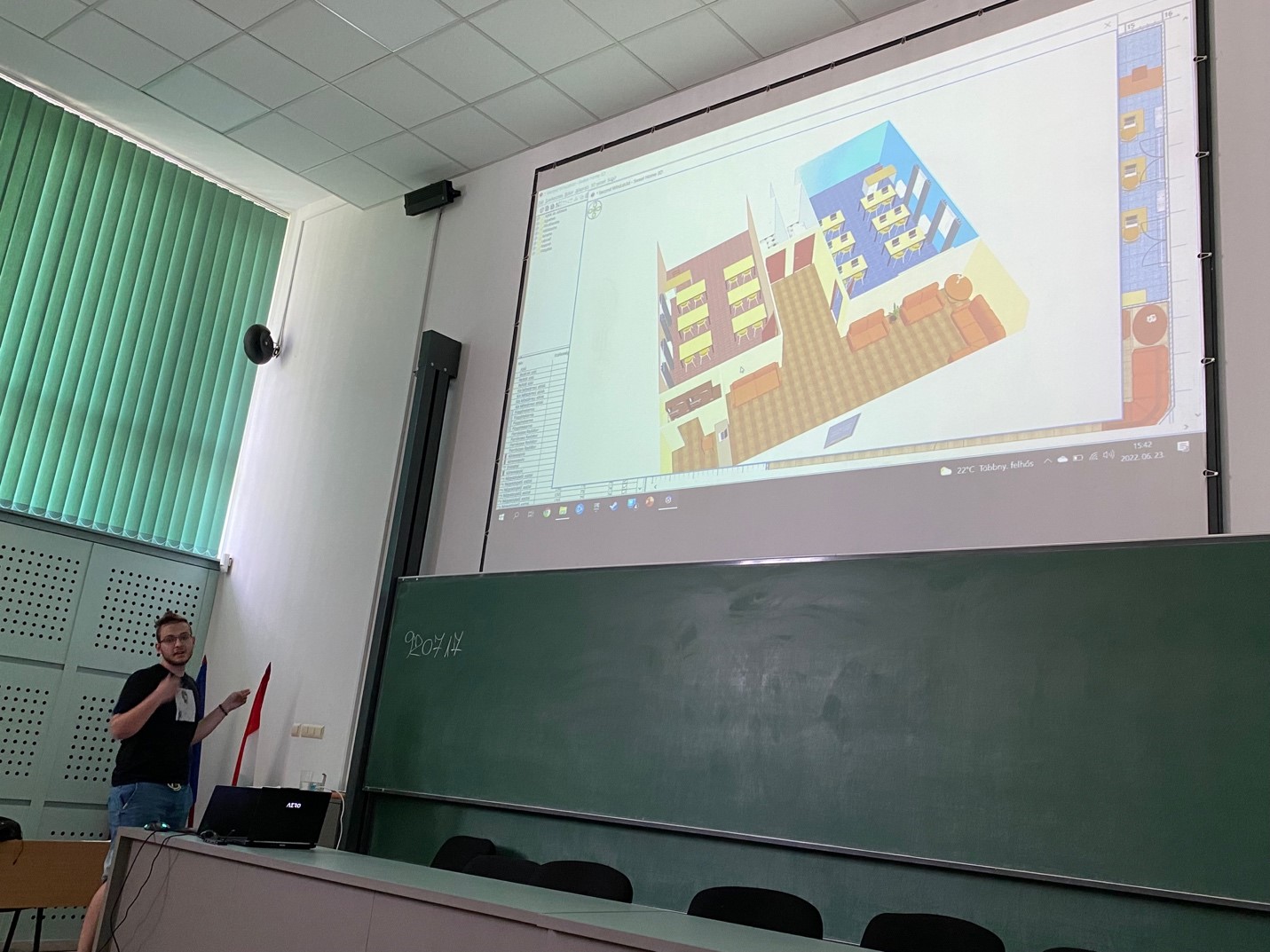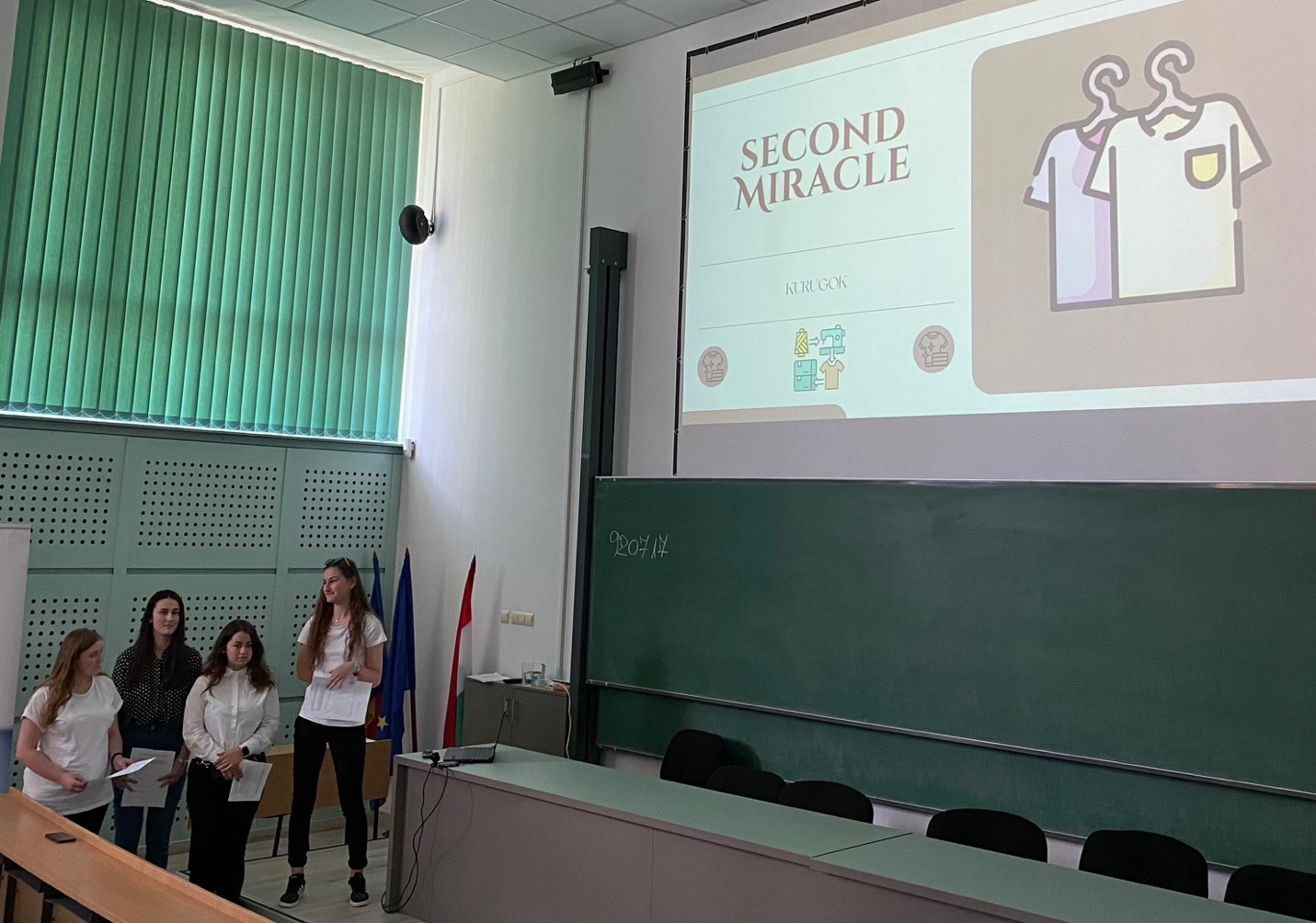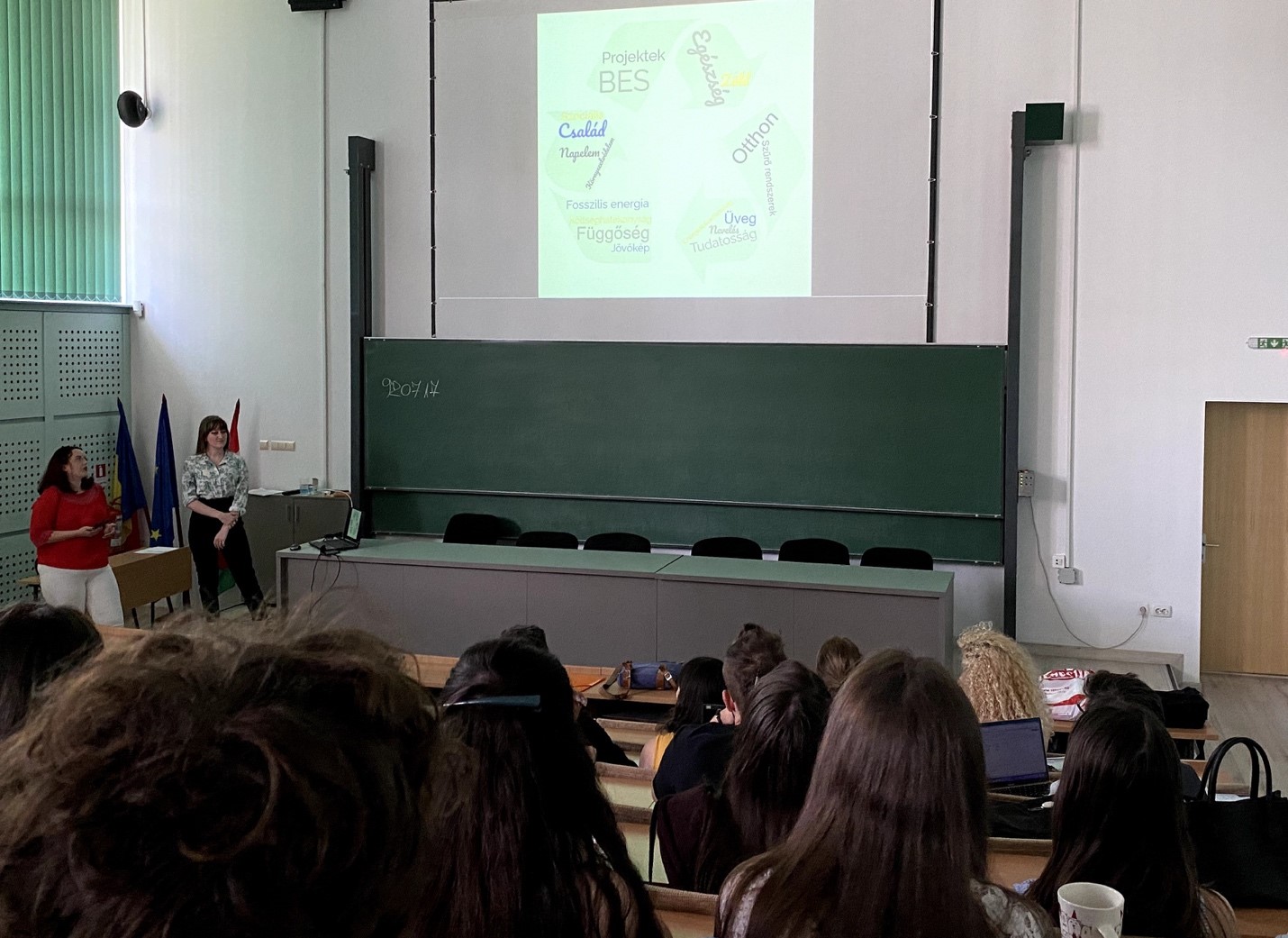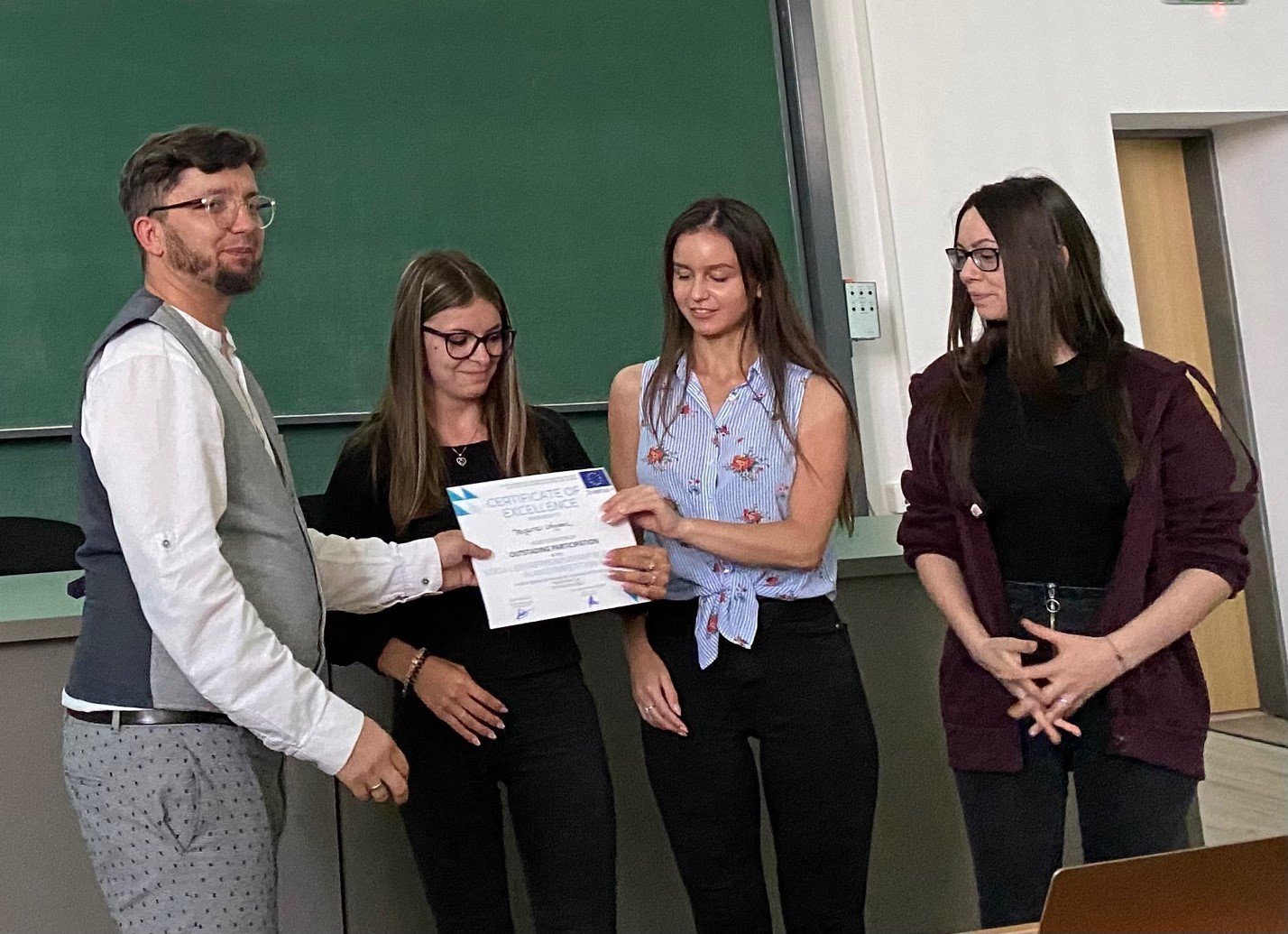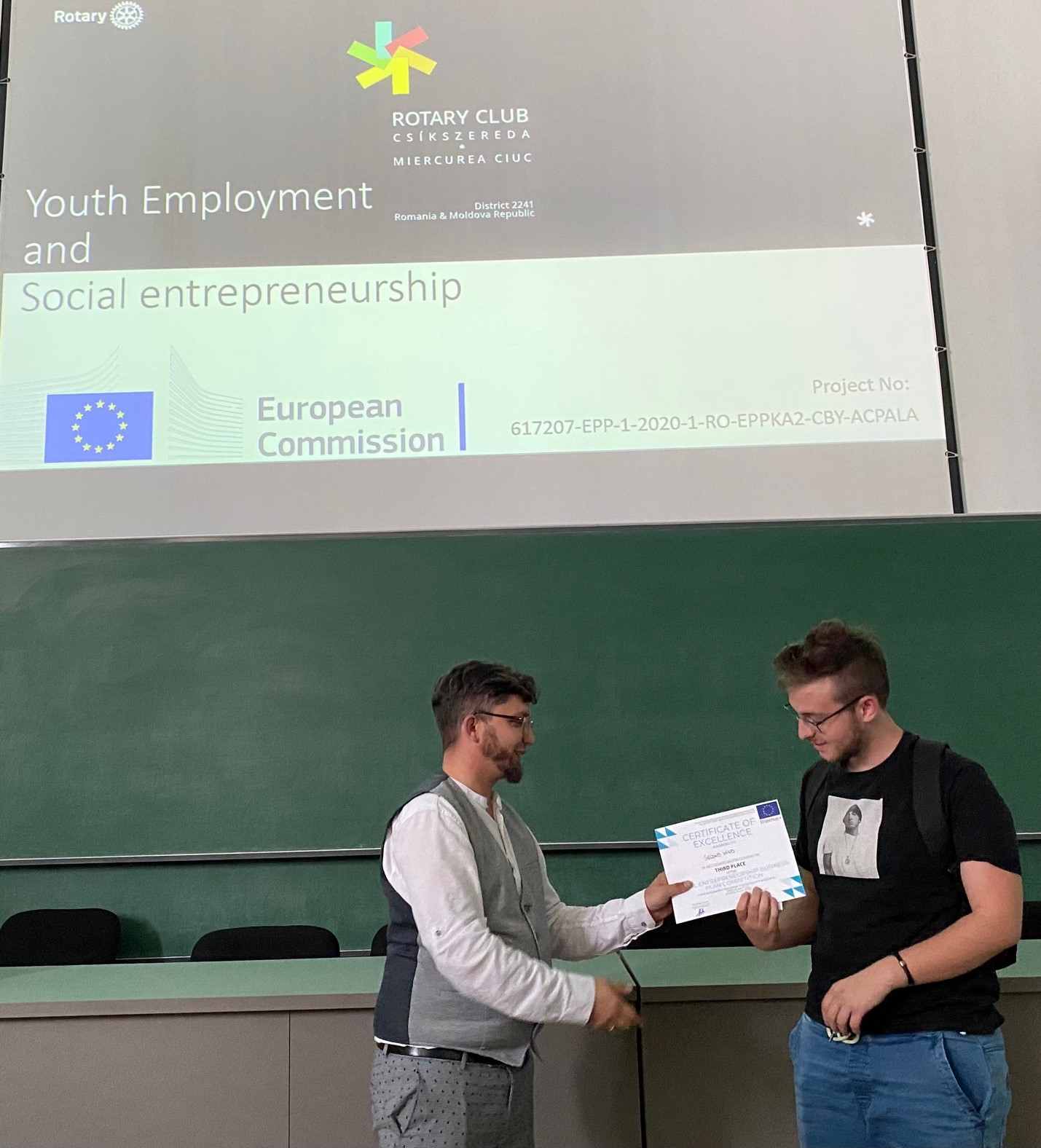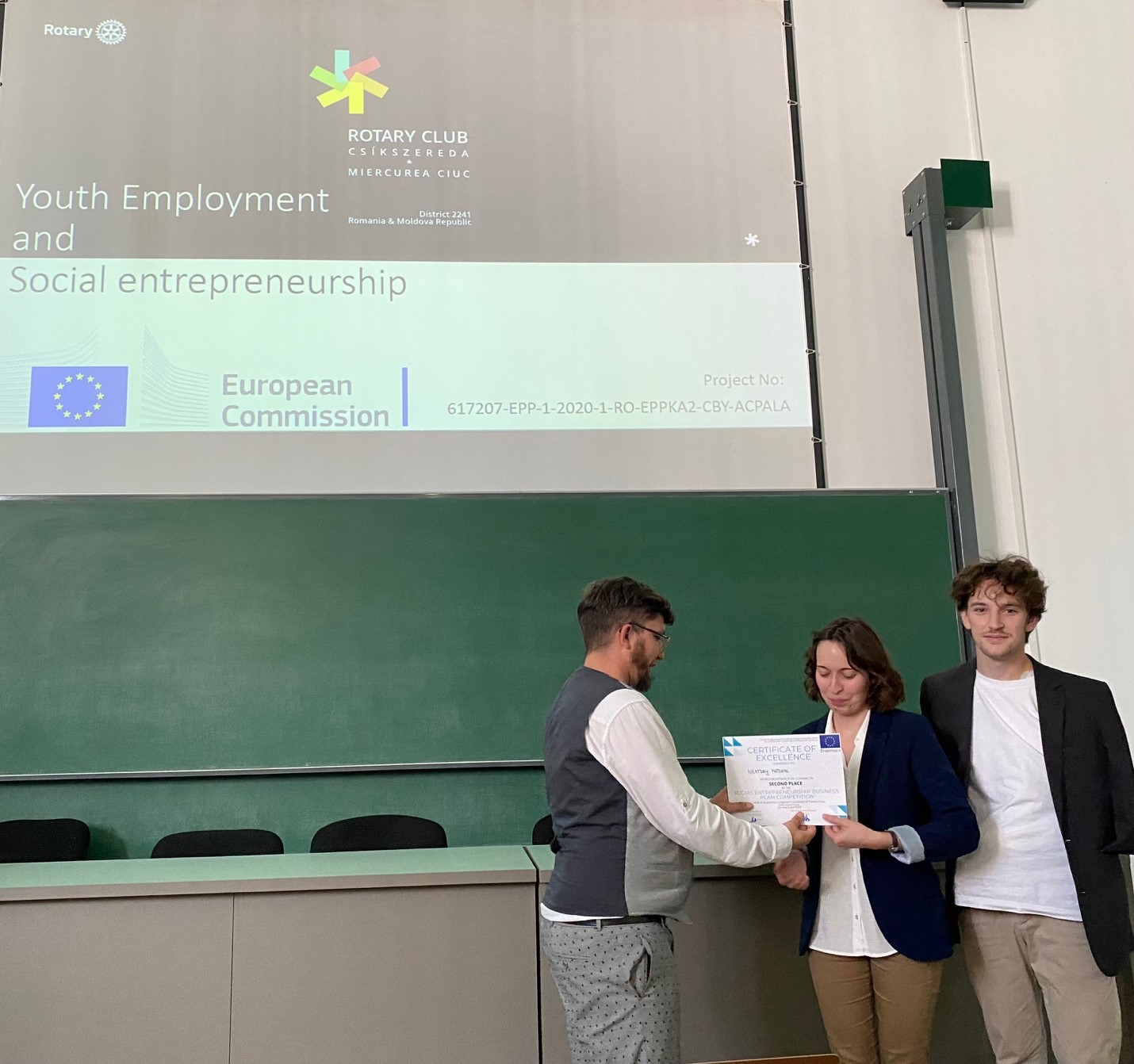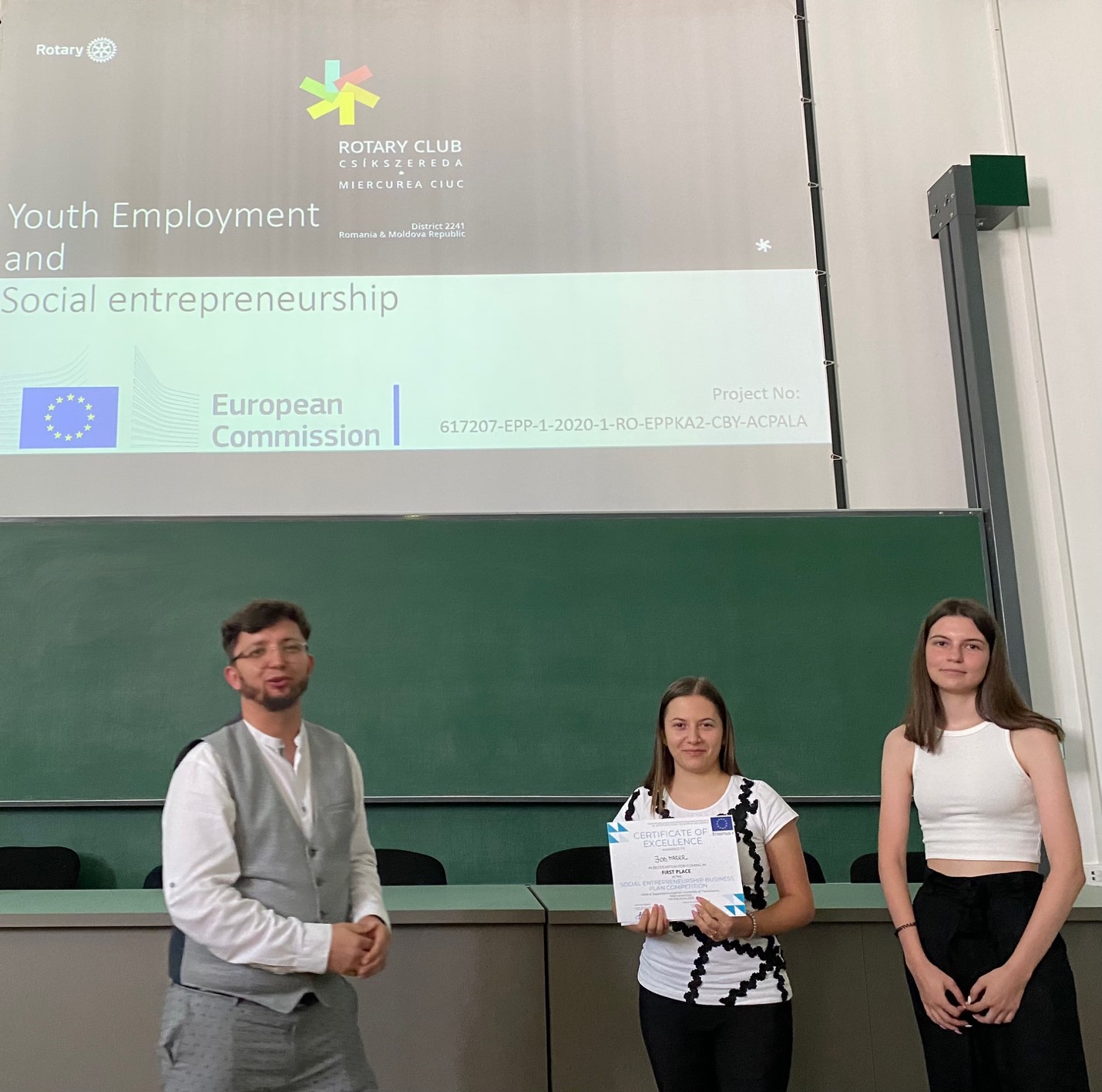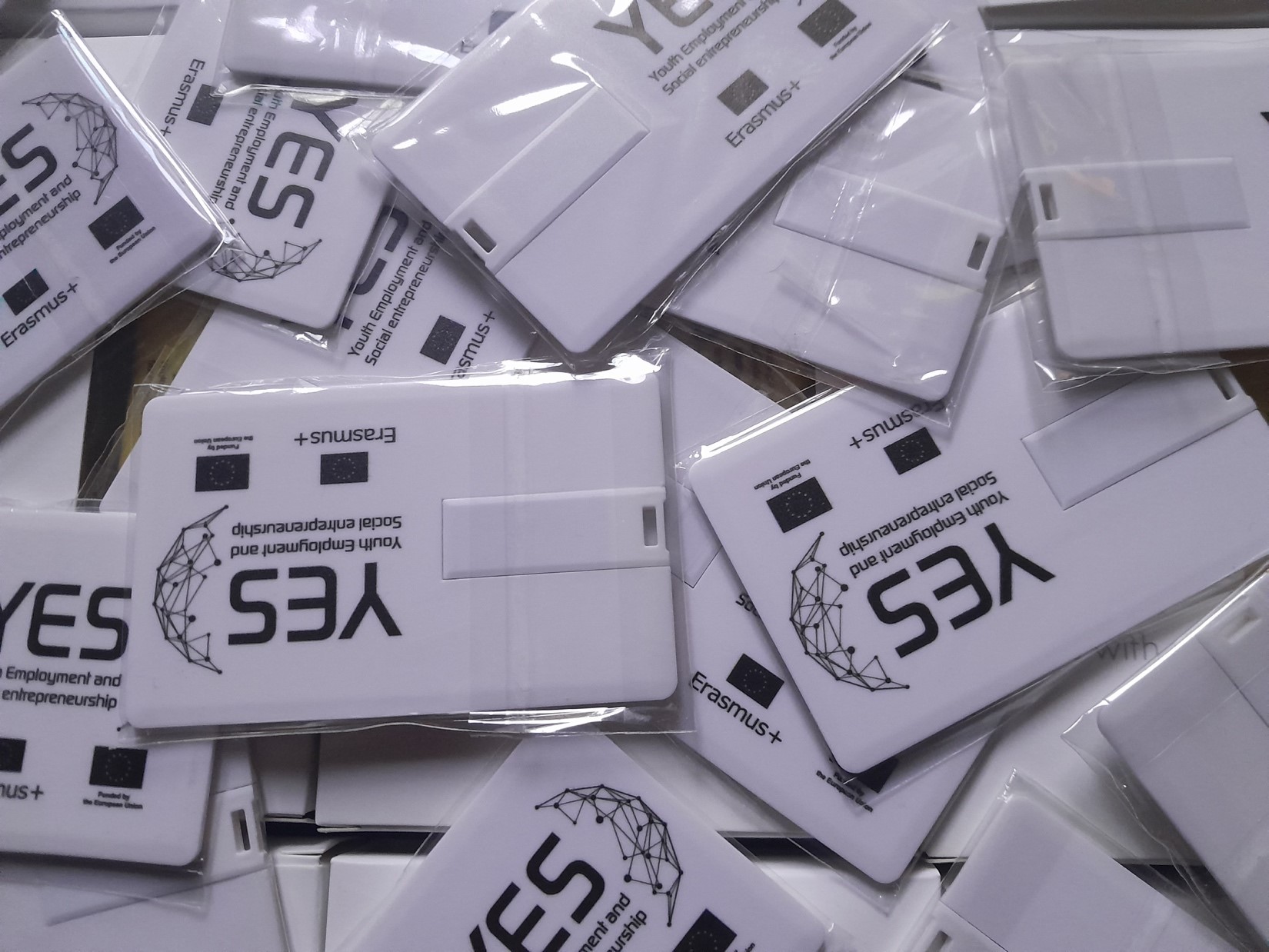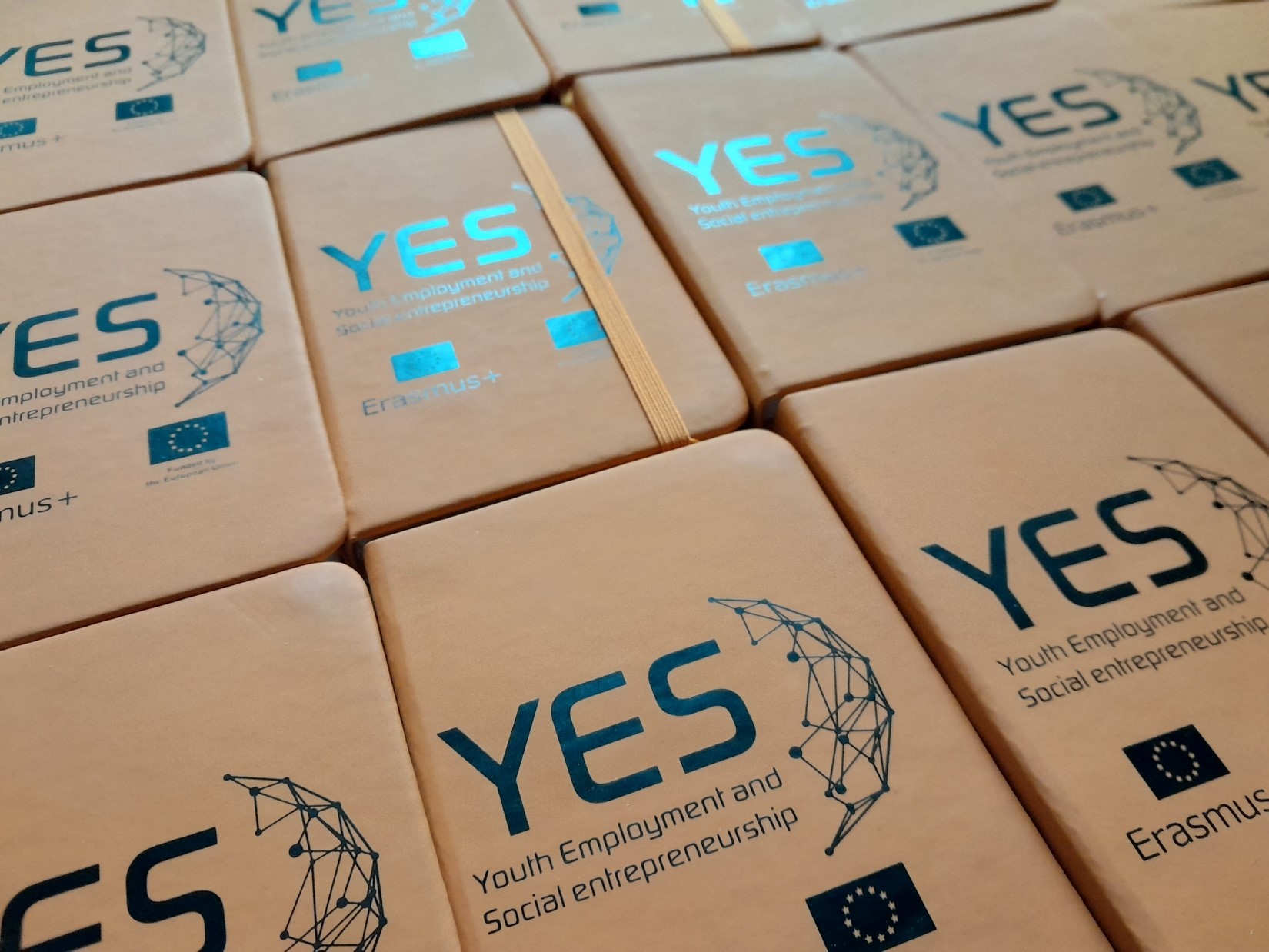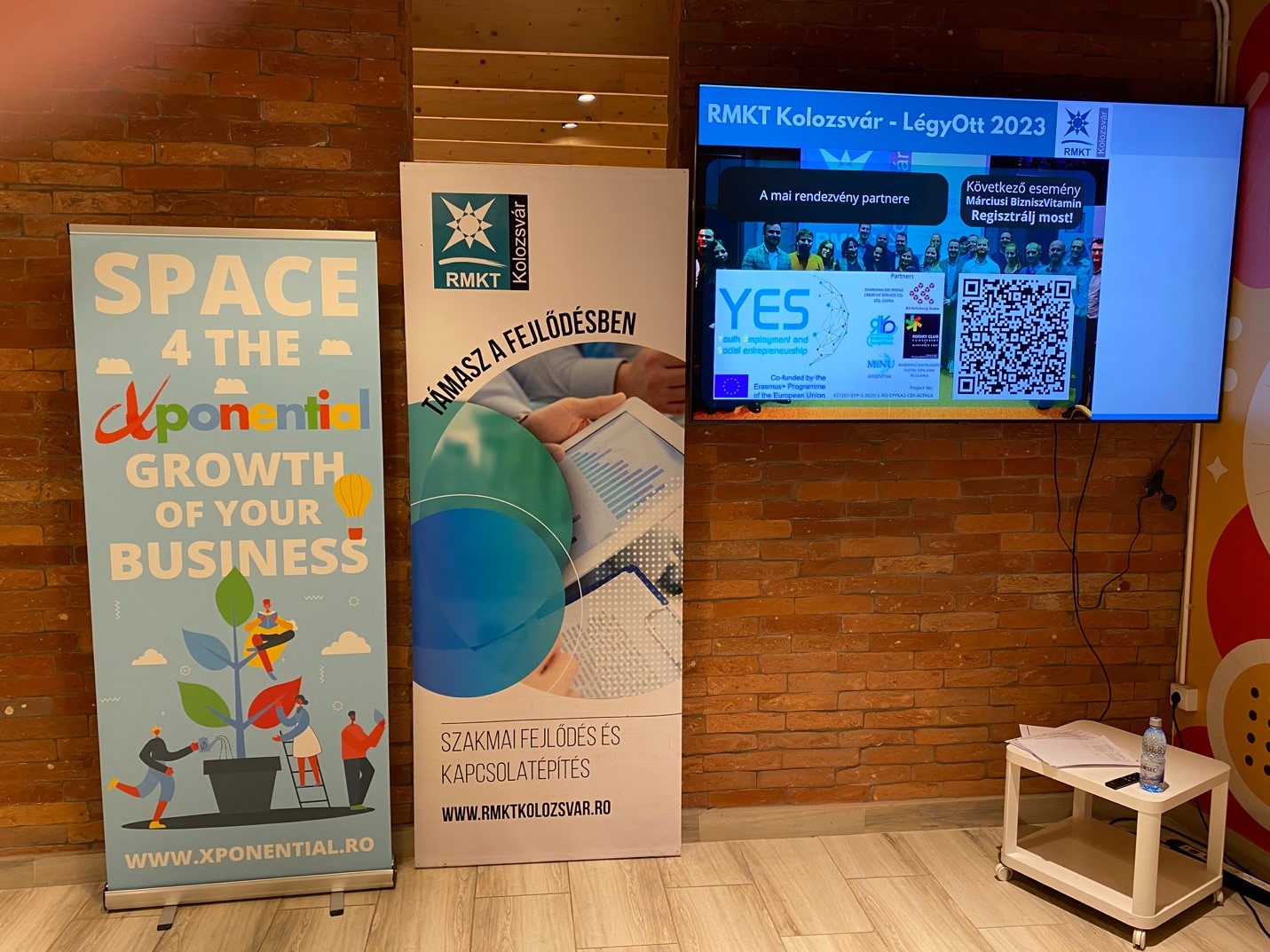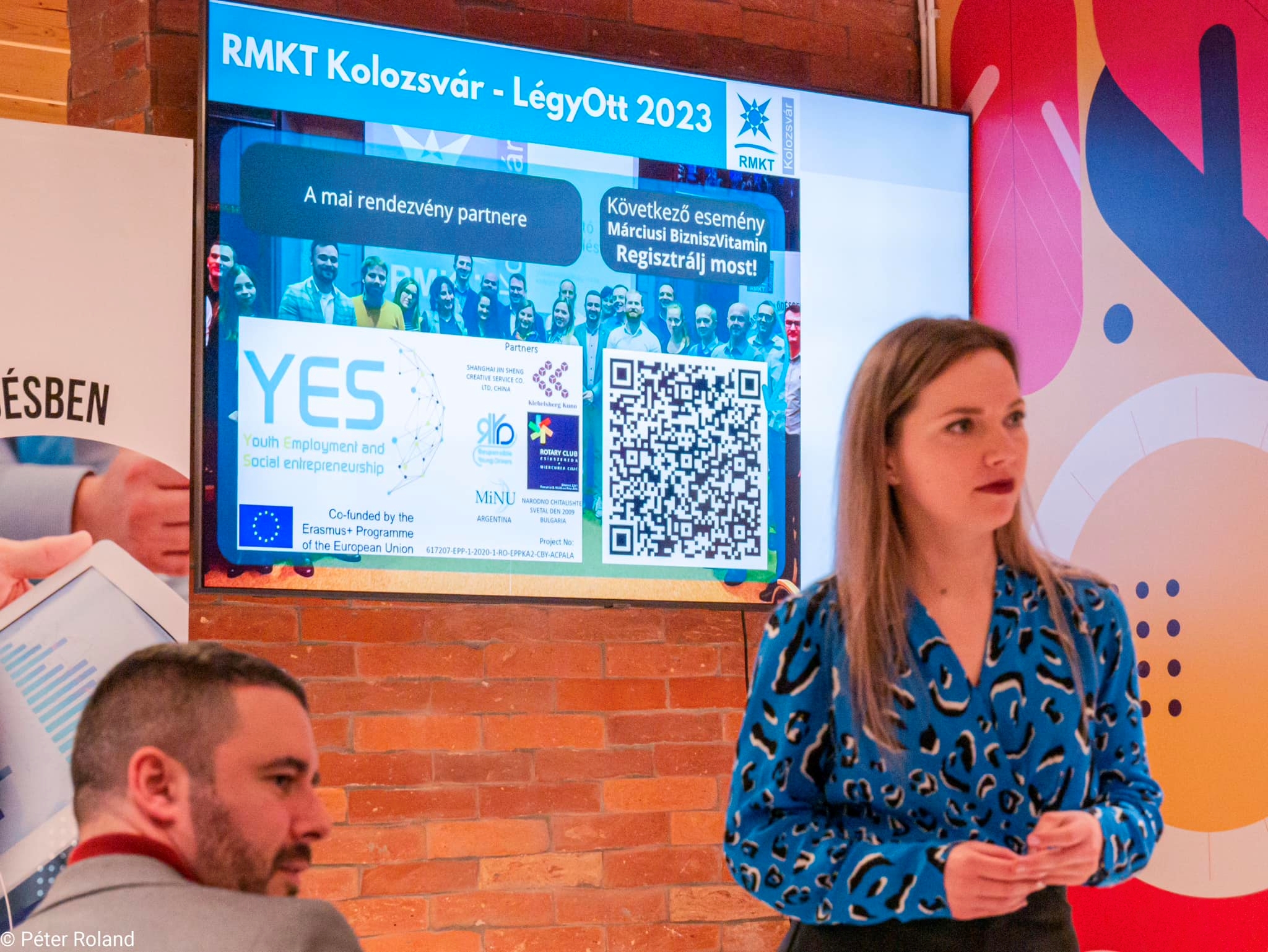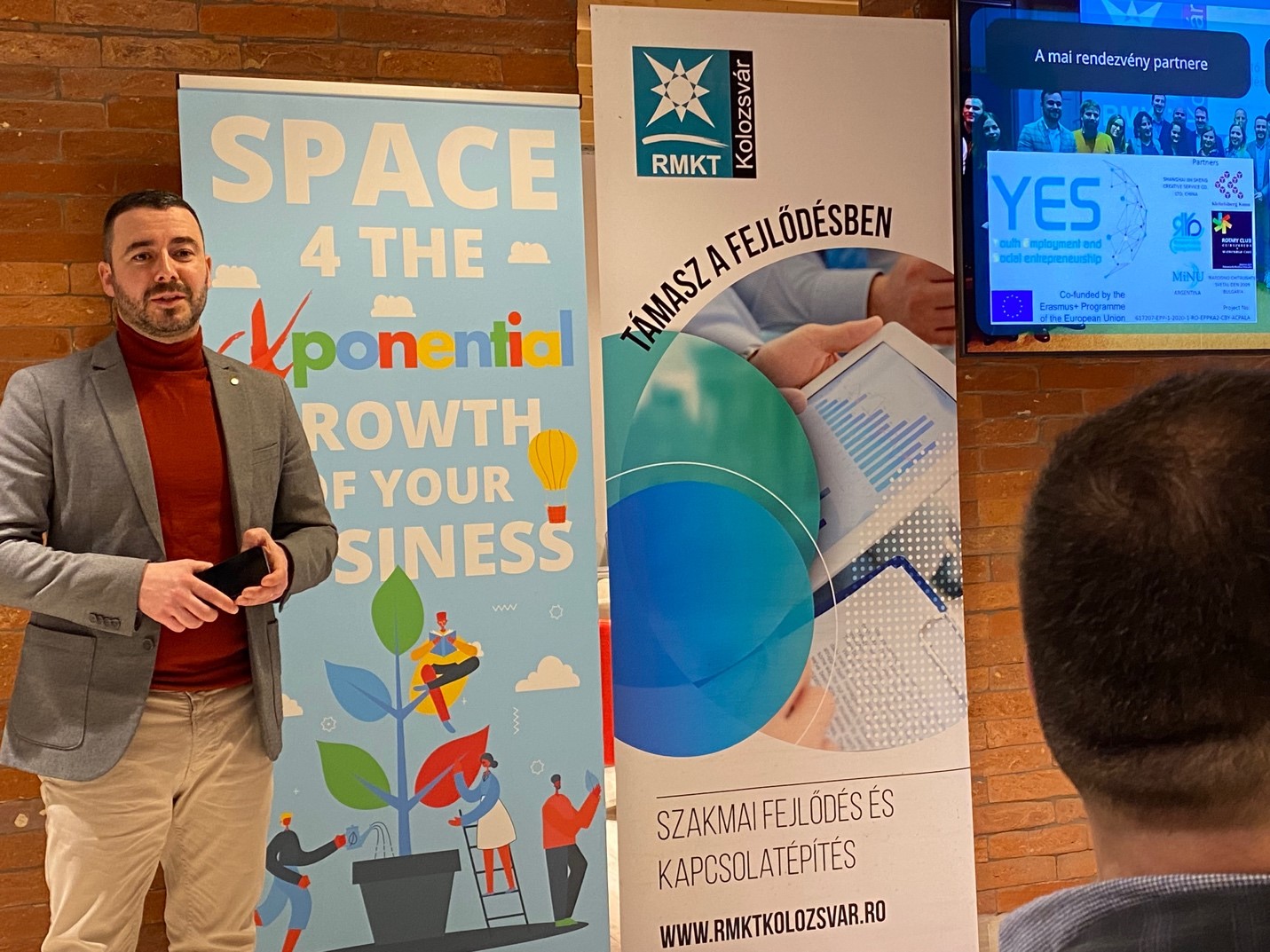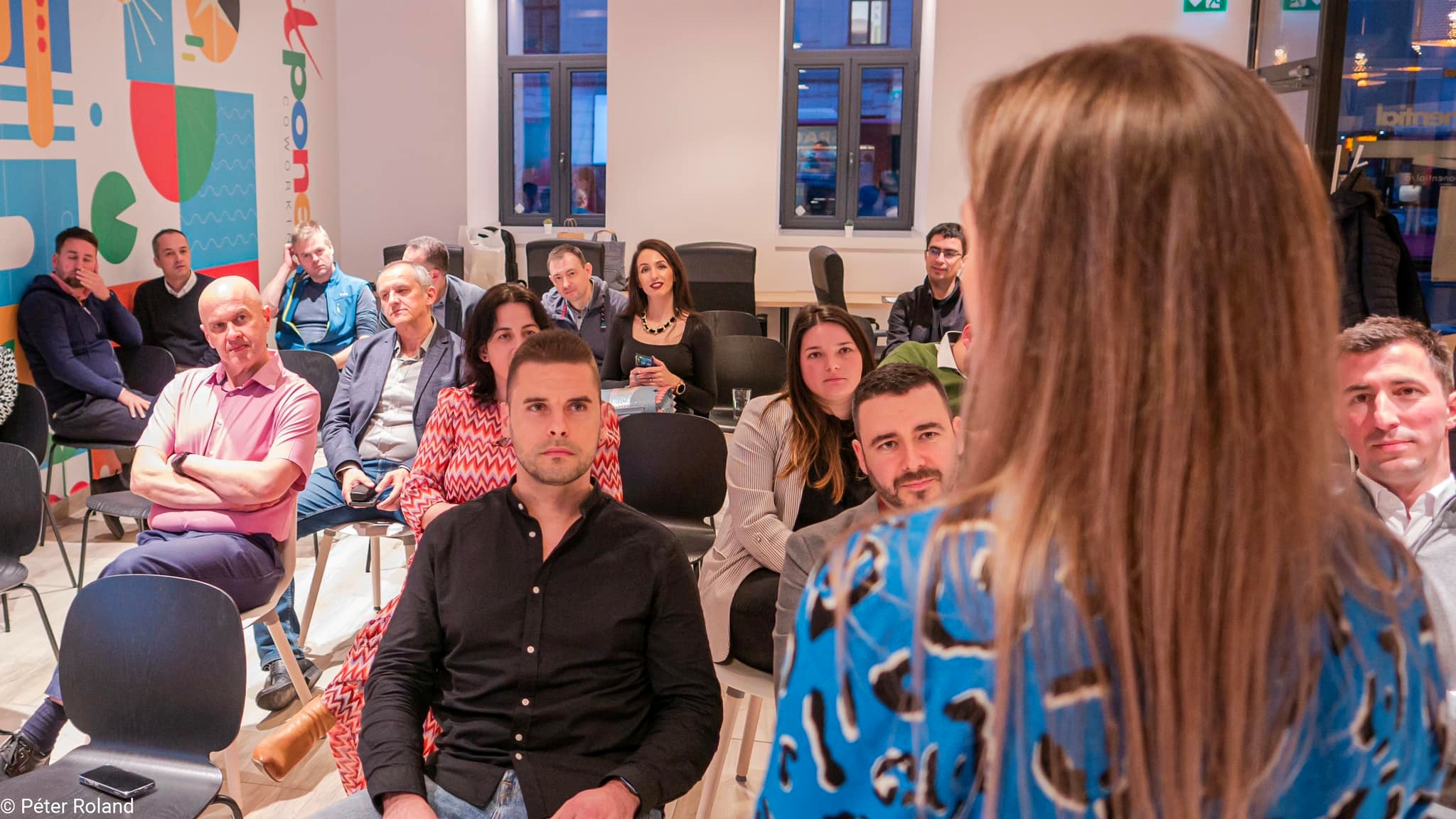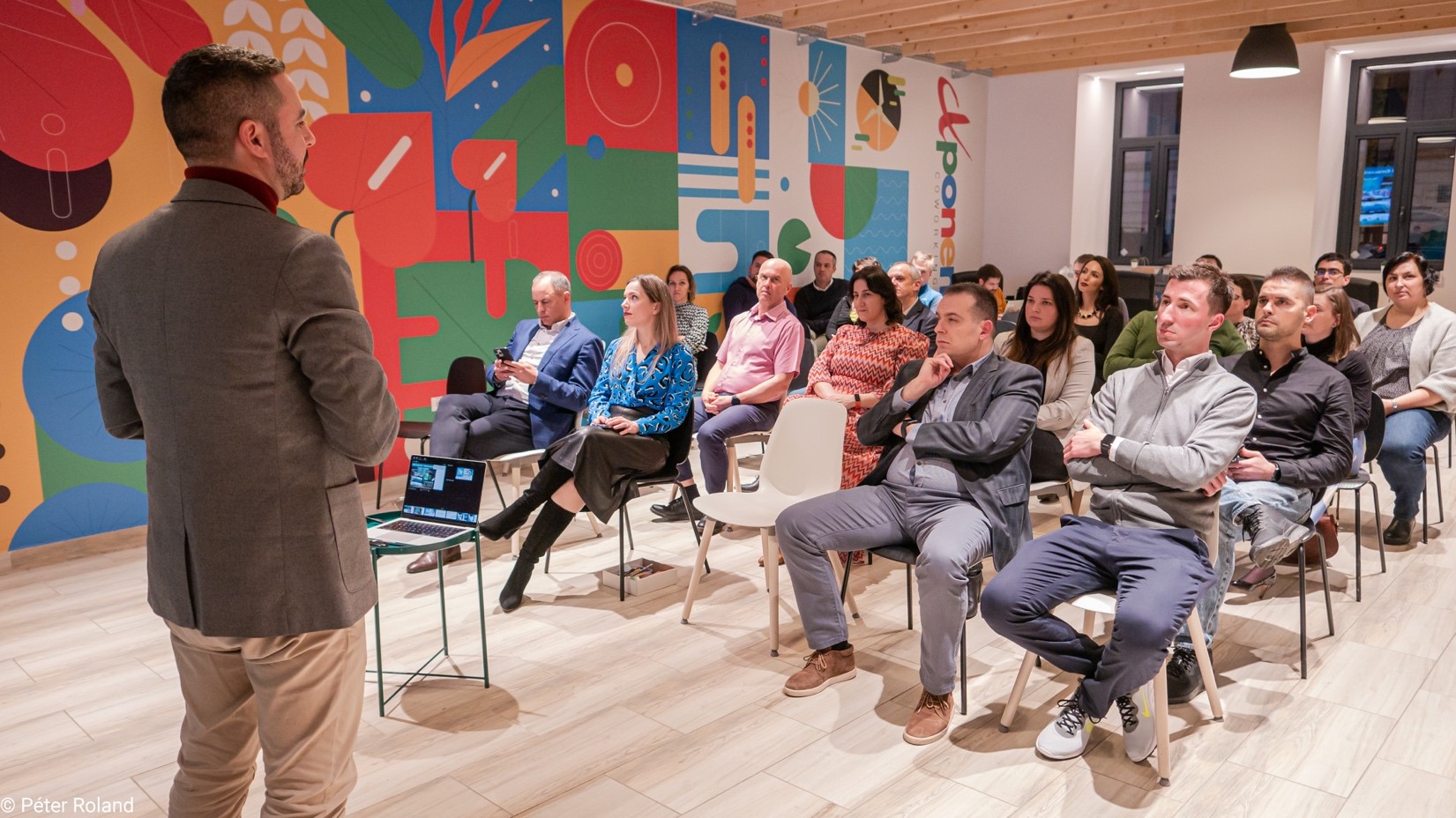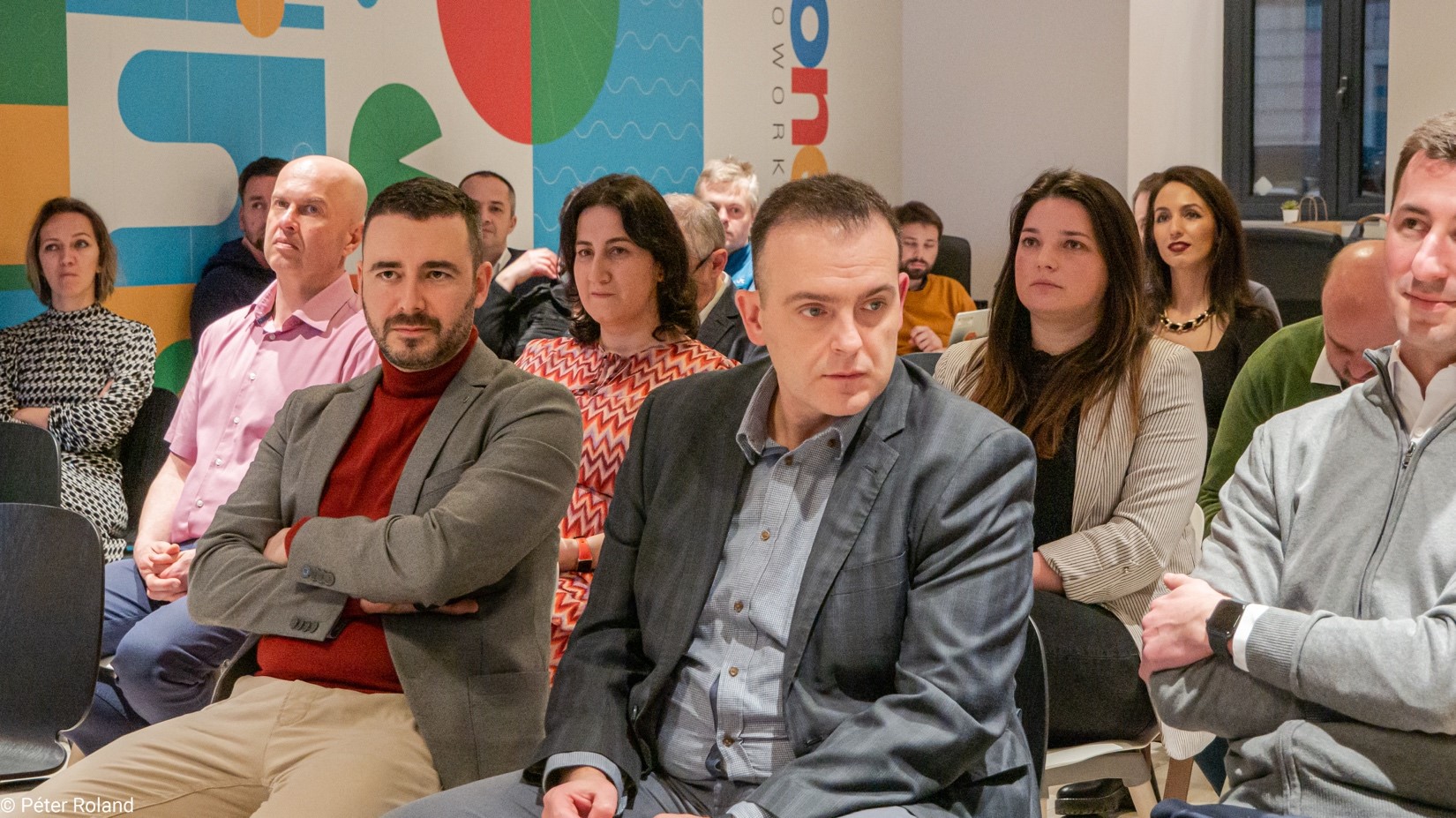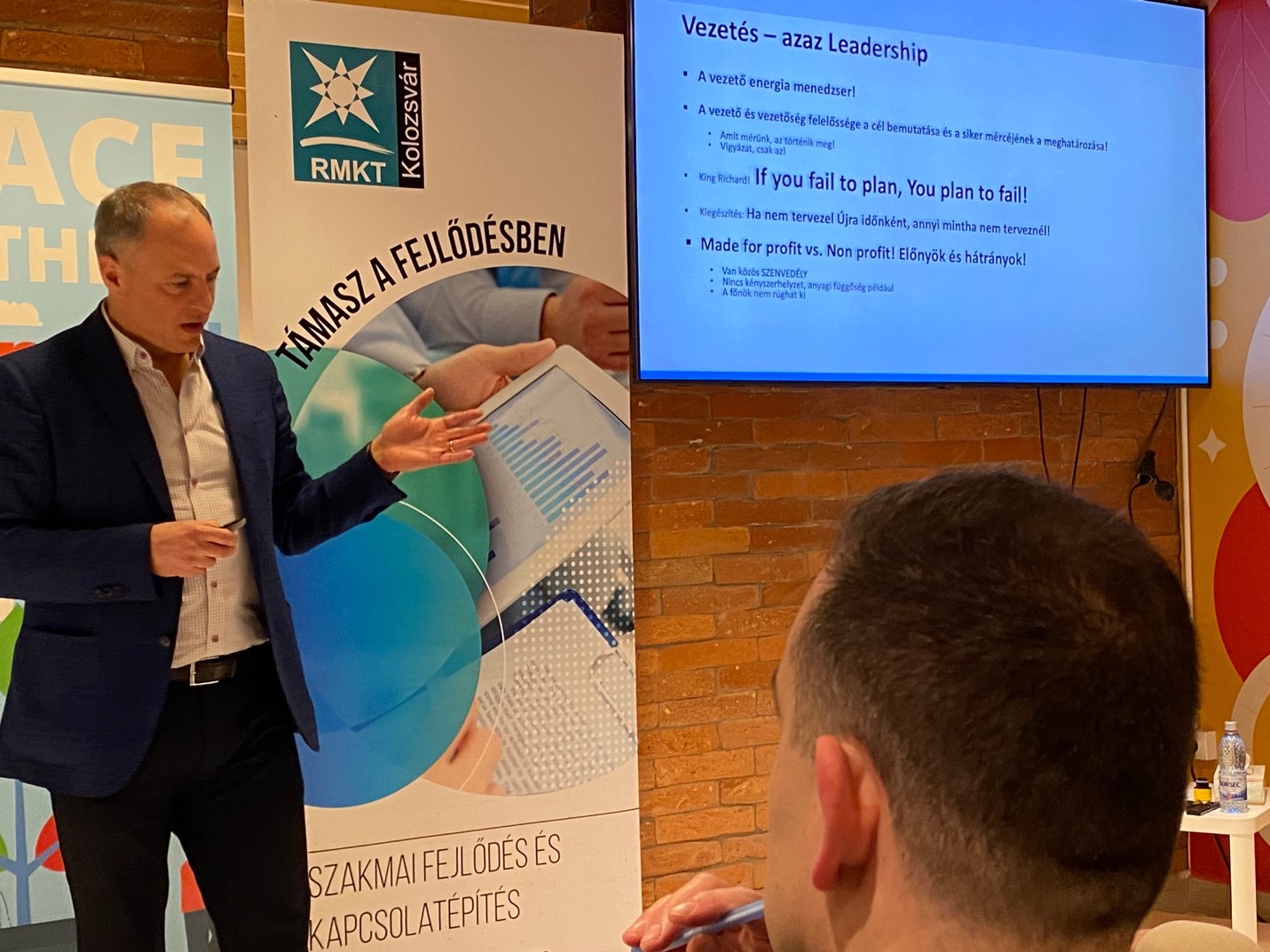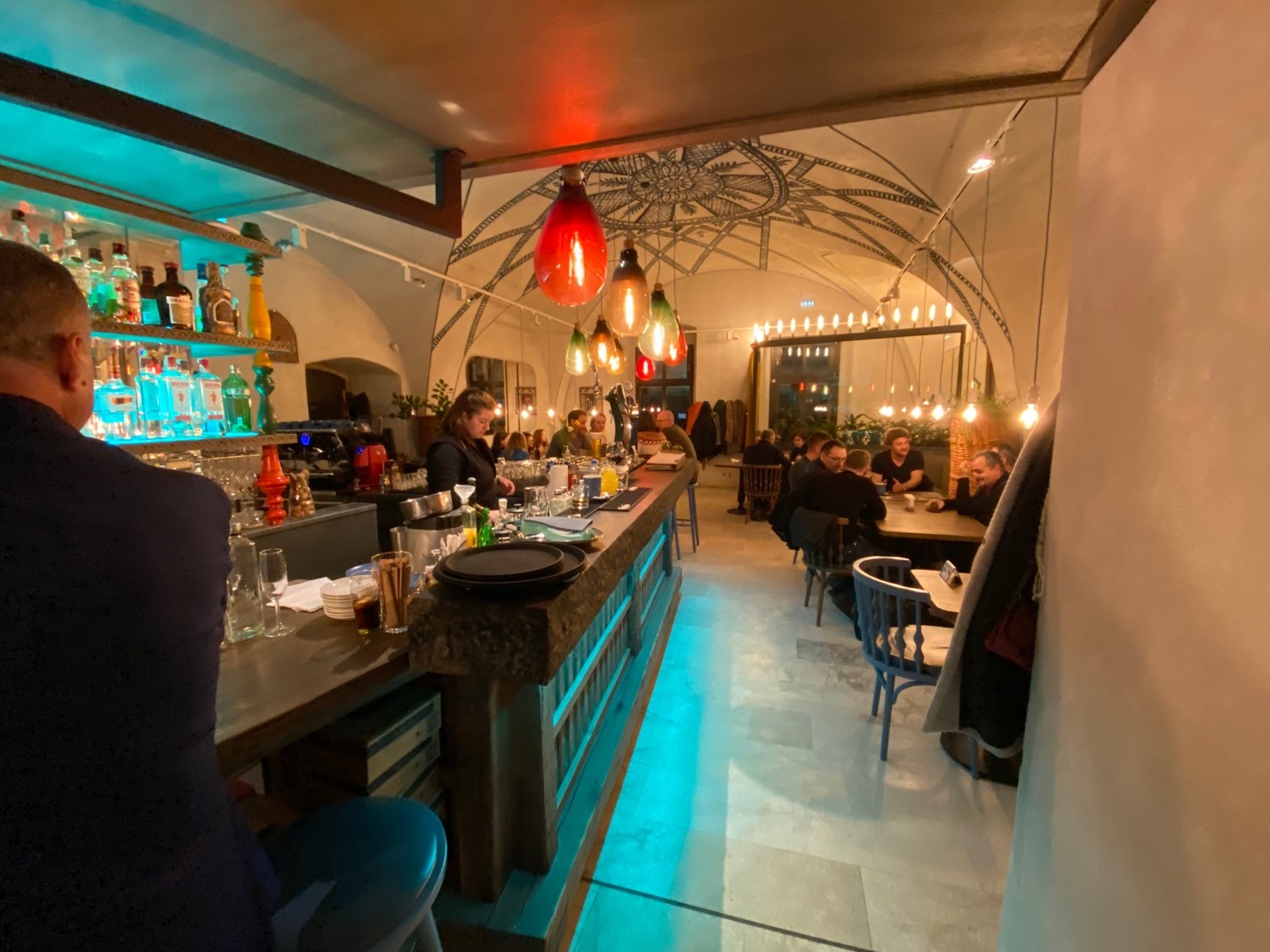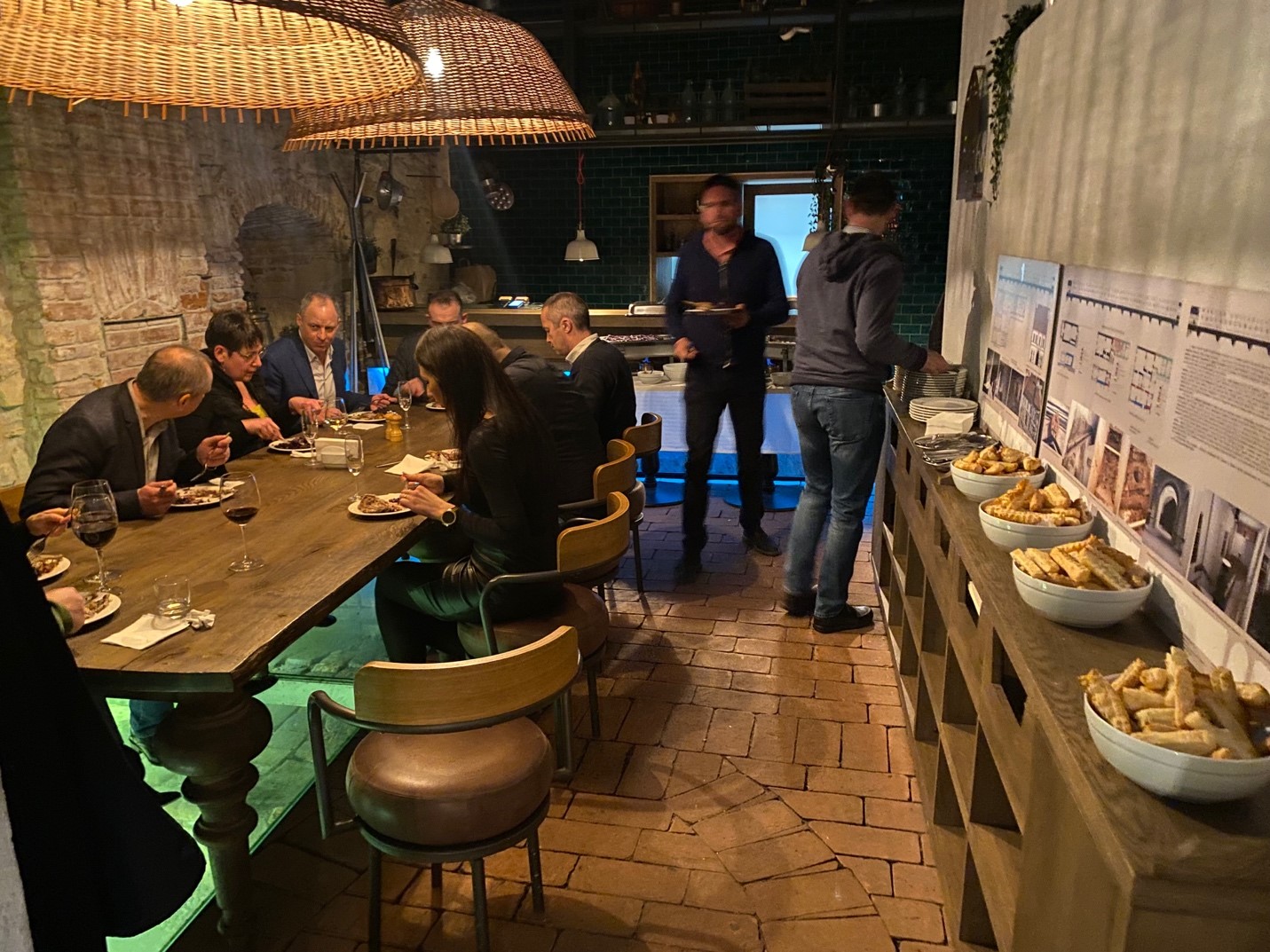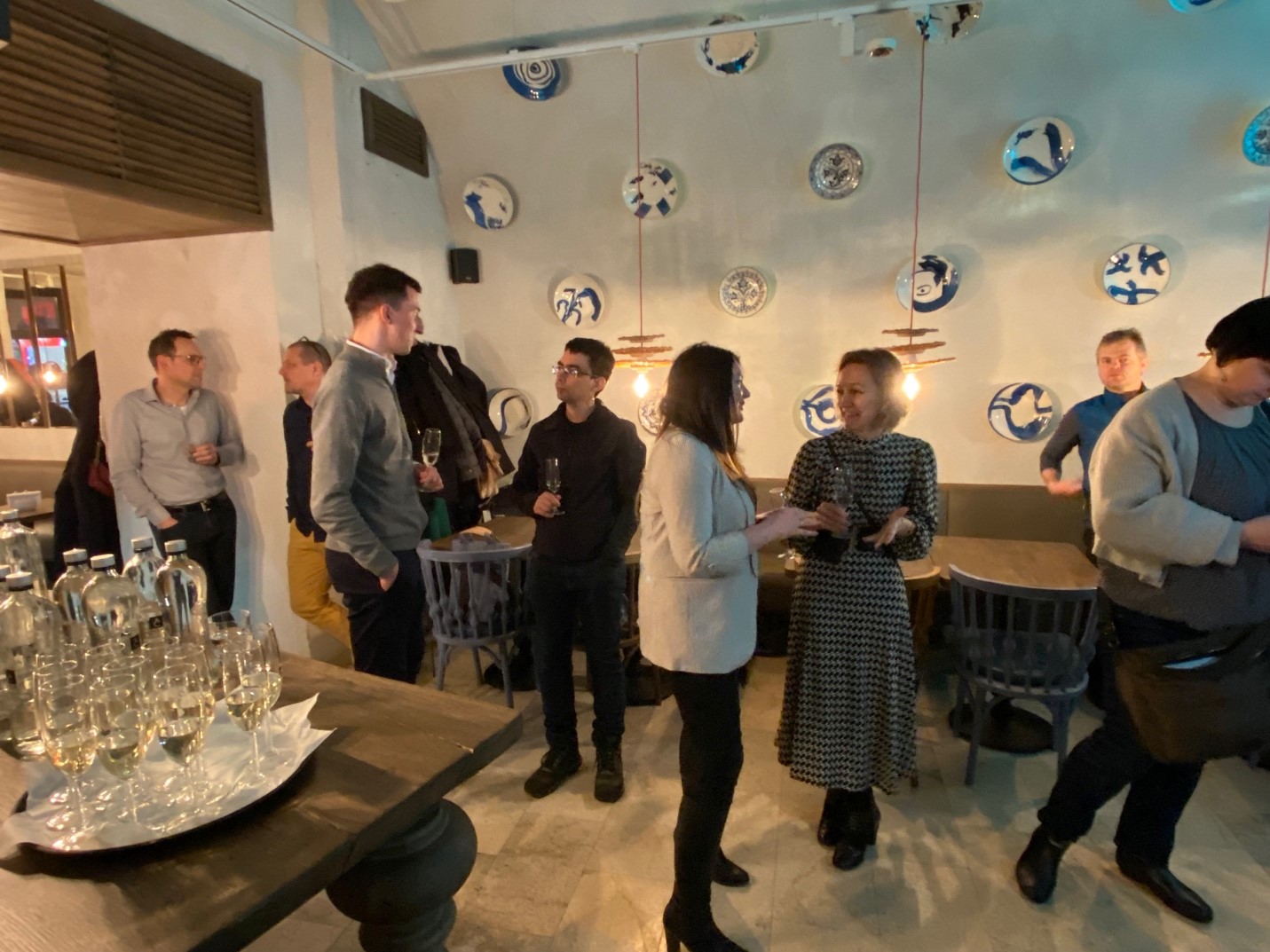Romania
Task Force Groups
1st Task Force Group Meeting
The First Task Force Group meeting taken place in Oradea, Romania. The group was made up of local business owners, trainers, experts and partners of the association, with whom we maintain a close relationship on parallel and past projects.
The members of the working group, in close cooperation with Association Klebelsberg Kuno and the members of the Rotary Club, support the implementation of the YES project and mentor the ideas of the youth participants.
2nd Task Force Group Meeting
Based on the experiences and feedback of the members of the Klebelsberg Kuno Association and the young participants gained during the Spark and Fuel trainings, the Task Force Group is improving the draft local plans to reflect the lessons learned in tackling youth unemployment.
The aim is to help to young participants to elaborate successful social entrepreneurship business ideas which can provide a solution to the entrepreneurial and social problems experienced in the environment of young people by combining these factors.
The young people also received guidance and advice in presenting their ideas in public.
Third Task Force Group Meeting
The third task force meeting was held just before the second Large scale youth event. The core points of the meeting were the evaluation of the first large scale youth event, which was prompted by the winner presentation of the Social entrepreneurship business plan contest. After the presentation, the participants discussed the details of the feasibility of the winning project idea in terms of its professional and social usefulness.
Fourth Task Force Group Meeting
The focus of the fourth task force meeting revolved around reassessing the progress made in Project YES. Additionally, a significant discussion took place regarding the upcoming Final meeting scheduled to be held in Guangzhou, China. During the meeting, participants shared their valuable experiences gained in China, emphasizing their relevance not only to the project itself but also to enhancing the effective utilization and profitability of the recently established international connections. Both the project and the Closing conference in China served to underscore the transformative impact of international experiences and the exchange of information on the local society, youth, and, in the broader scope, the economy, by fostering innovation and forward-thinking.
Spark " Fuel Trainings
20 young volunteers were selected to take part in the award winning online entrepreneurship training, held by Australian Queensland University of Technology (QUT). The aim of the training was to prepare the youth participants to be able to create independently a business plan, for entrepreneurial thinking and decision-making, as well as for obtaining information necessary for management and marketing.
The main goal is to create a business plan from scratch for a social entrepreneurship. During the program the youth participants was working together both online and in person. After finishing the SPARK and FUEL modules of QUT Entrepreneurship, the participants got an official certificate of attendance.
Rotary Showcase
Our association in collaboration with the local Rotary Club and Sapientia University organized the Rotary Showcase for youth workers and youth with ages between 18-24.
The aim of the event was to present and to inform the youth about the initiatives of the project YES and the Rotarty Club membership.
Association Klebelsberg Kuno together with the Local Task Force Group and local Rotary Club decided to create and print out in form of a book a YES brochure, which will contain informative data and aims of the project YES, descriptions about the partners involved, and will present the social entrepreneurship ideas of the youth and the outcomes of their work, in form of the presentations which will be presented in the social business plan contest organized in the framework of the Large scale youth event.
During the event, the participants had the opportunity to take part in an engaging training session on social entrepreneurship, as well as various life examples of Rotary's event organization and implementation of activities. The session was led by the professor of the Faculty of Economics of Sapientia University, who is also a member of the local Rotary Club.
Large Scale Youth Event
The Large scale youth event was consisted of two independent events:
The first event was a social business plan competition, where the young participants presented their business plans after an entrepreneurial training. The social business plans was the result of group works with mentor support. The mentors were the members of the local Rotary club.
The following criteria are taken into account when selecting the winning business plan: the winnig project idea has to be innovative, marketable, sustainable, feasible.
The next social entrepreneurship business plans were the finalists:
- NextDay Mediate: digital employment agency in the hospitality industry for career starters.
- JobMaker: With the help of an application find local and student jobs for young unskilled workers and students
- Second Wind: To help disadvantaged young people find a job with an algorithm they wanted to develop
- Transit camp: Create vacation opportunities for disadvantaged young people.
- Second miracle: To give a second life to used, unwanted clothes and accessories with the help of an application.
After the presentations of the youth, a jury consisting of Rotary members, university lecturers and entrepreneurs, evaluated and awarded the projects and selected the best social business plan.
Within the framework of the second Large scale youth event, which was organized in collaboration with the local Rotary Club and the Hungarian Society of Economists in Romania there was held a training about business process management and time management. After the presentation the winning business plan was presented in front of the present entrepreneurs, NGO members, local decision-makers, Rotary club members and engineers. The purpose of this was to promote the importance of social entrepreneurship in society and to start a conversation among the participants, thus popularizing the goals of the project.
After the event, an informal dinner was organized for formal and informal discussions about the project, future business opportunities and social entrepreneurship.
The 40 pages long printed YES brochure published jointly with the local Rotary Club and the Task Force Group was also presented in front of the public and distributed, which led to interesting discussions and exchange of experiences, thereby improving the outcomes of the project and the improvement of business opportunities for young people present on the event. The borcure contains informations, photos and presentations of the social business plans presented in competition during the Large scale youth event.
The YES Brochure will be available also online, for the purpose of a clearer and transparent dissemination of information and also with the aim, that after closing the project YES, to serve to other young people as an inspiration and life example what the youth involved in project YES created by learning and working on their ideas.
The link to access the brochure online version: https://www.flipbookpdf.net/web/site/3566f4b5bc0d1607436d9c3efc485f1a1d6ddce9202304.pdf.html
Implementation of the winner social business plan
Jobmaker
The team: Sala Anett Bettina and Tamasi Agnes
Their primary objective is to provide employment opportunities primarily for young, unskilled workers and students. They are committed to bridging the gap between employers and job seekers by facilitating connections through the promotion of local businesses, with a specific focus on Harghita county, Romania.
Acknowledging the difficulties encountered by young individuals in their job search, they aim to establish a platform that brings together employers and job seekers. Through the promotion of local businesses and their available job opportunities, their goal is to facilitate direct and meaningful interactions between these two groups.
Their approach involves highlighting the diverse range of businesses operating in Harghita county, Romania, aiming to shed light on the region's job market potential. This not only provides young job seekers with a wide range of options but also encourages them to explore local employment opportunities, thereby contributing to the growth and development of the community.
Their dedicated efforts are focused on fostering a symbiotic relationship between employers and young workers, creating a supportive environment where talent and opportunity converge. Through their initiatives, they aspire to empower young, unskilled workers and students, enabling them to secure meaningful employment and make valuable contributions to the local economy and community.
A significant social issue arises from the mismatch between employers seeking labor and highlighting labor shortages, and workers actively searching for suitable job opportunities. This disparity becomes particularly evident in the case of students. The misalignment of these perspectives has far-reaching consequences, and it directly impacts individuals in the labor force classified as unskilled workers.
From the employers' standpoint, the challenge lies in finding qualified individuals who can meet their specific workforce requirements. They often emphasize the scarcity of skilled workers, which leads to a highly competitive labor market and potential gaps in job availability. On the other hand, workers, including students, strive to secure employment that aligns with their skills, interests, and aspirations. However, navigating this complex landscape proves challenging as there may be a mismatch between the desired job criteria of workers and the available opportunities.
For students entering the job market with limited professional experience and skills, this situation has a direct impact. They encounter difficulties in finding suitable employment that aligns with their qualifications and goals. The gap between the demands of employers and the current skill set of students places them at a disadvantage, hindering their ability to secure meaningful and fulfilling employment.
Addressing this social issue necessitates a collaborative effort from various stakeholders, including educational institutions, employers, and policymakers. By bridging the gap between the skills demanded by employers and those possessed by workers, particularly students, a more harmonious and efficient labor market can be created that benefits both parties. This can be achieved through initiatives such as skill development programs, educational reforms, and improved communication between employers and educational institutions to ensure a better alignment between job market demands and the skills of the workforce.
They had a clear vision for their marketing campaign, aiming to promote their services through online platforms and engage with students by presenting them in schools. They recognized this approach as a valuable opportunity to expand their reach and connect with a wider audience. From a business perspective, it offered a favorable advertising opportunity, as it was perceived as cost-effective, leveraging the concept of "cheaper labor."
To successfully implement the mentioned application, further development is necessary. The application's usage requires the use of a digital device and access to the internet, as they are integral components of the user experience. In the case of businesses, acquiring user licenses would be essential to utilize the application effectively, ensuring seamless functionality and access to its features.
Pictures from prototype:
In terms of financial planning, they provided an overview of their budget, outlining the allocated resources for the development, deployment, and maintenance of the application. This budget encompasses basic aspects of the project, ensuring sufficient funding to support its successful implementation and continued operation.
